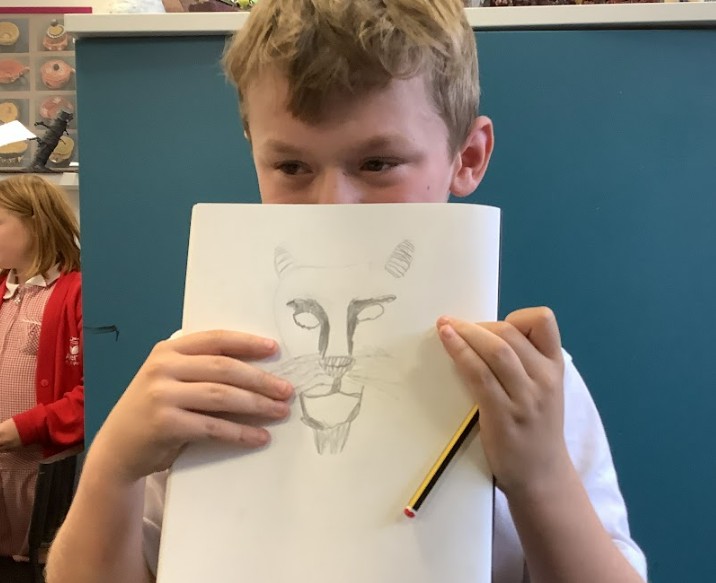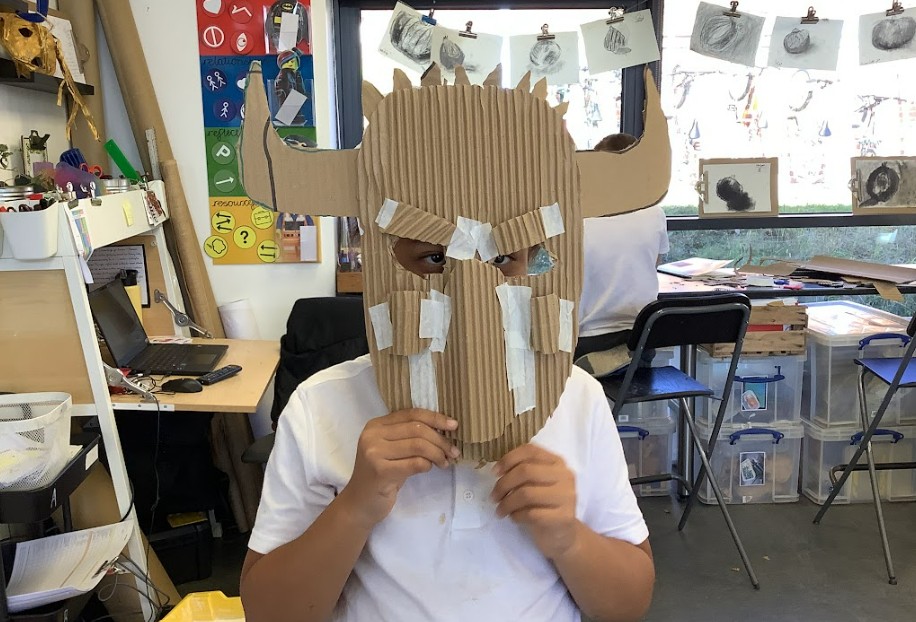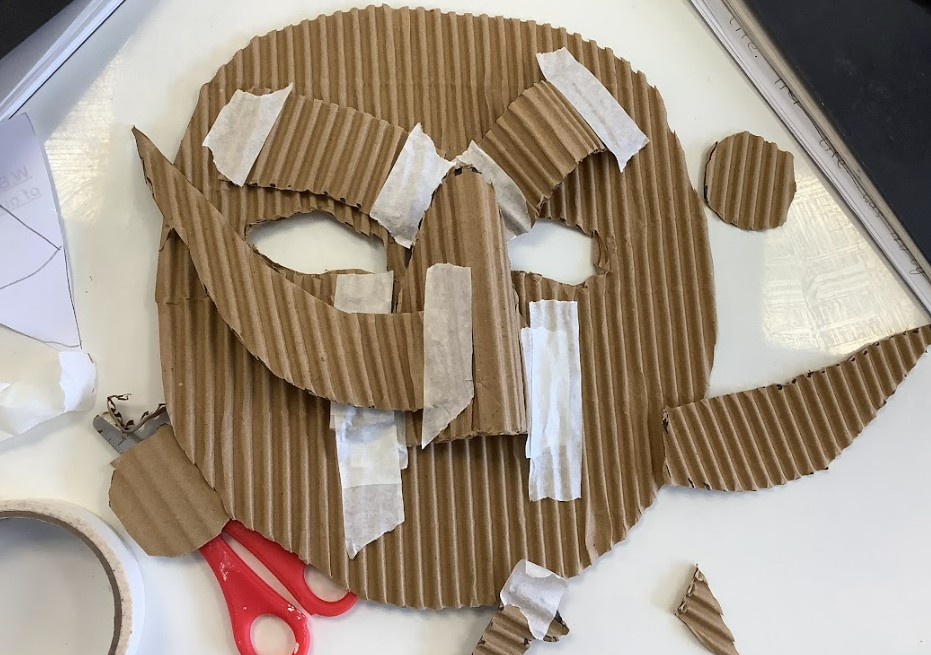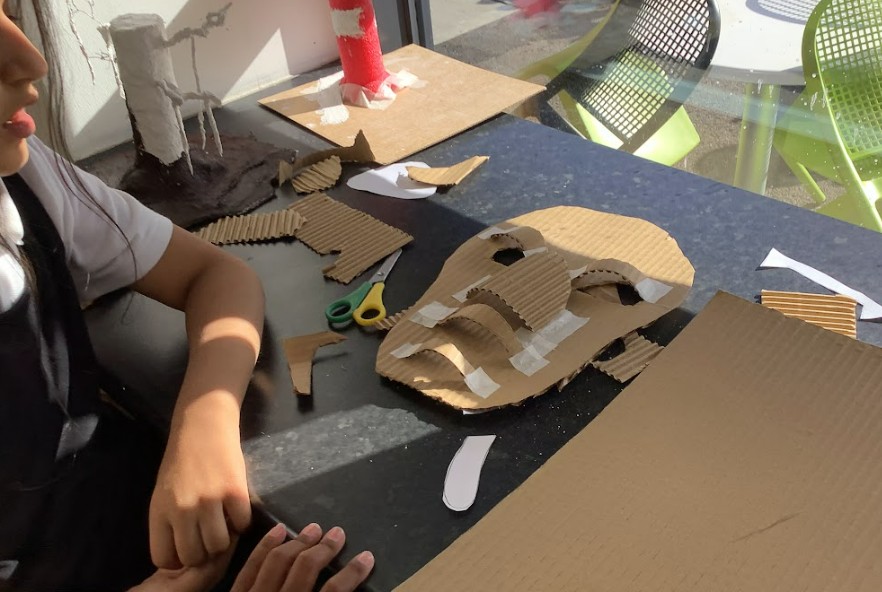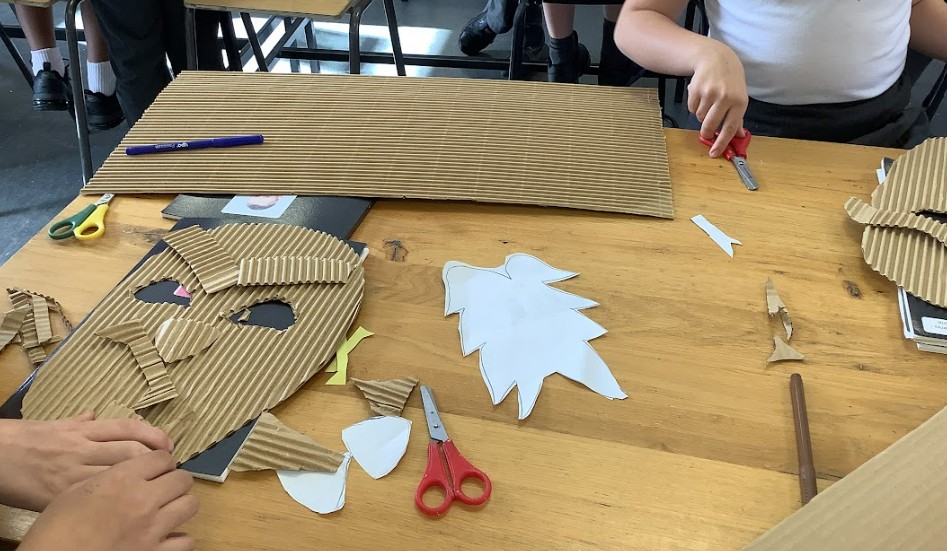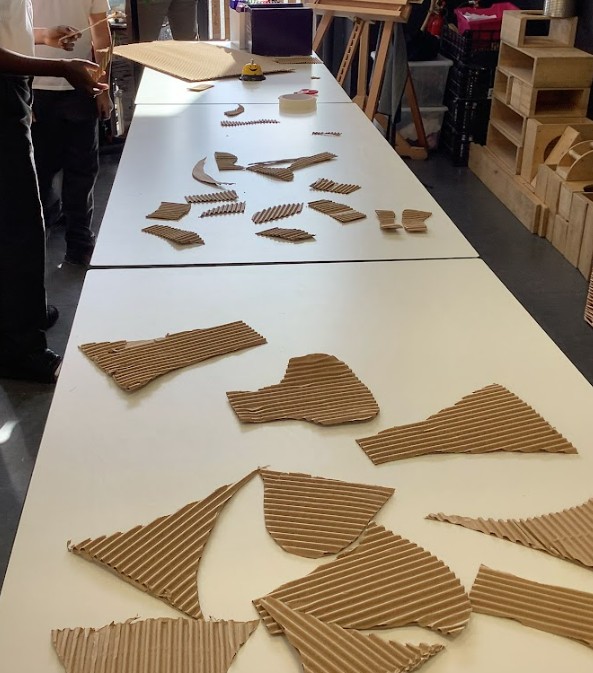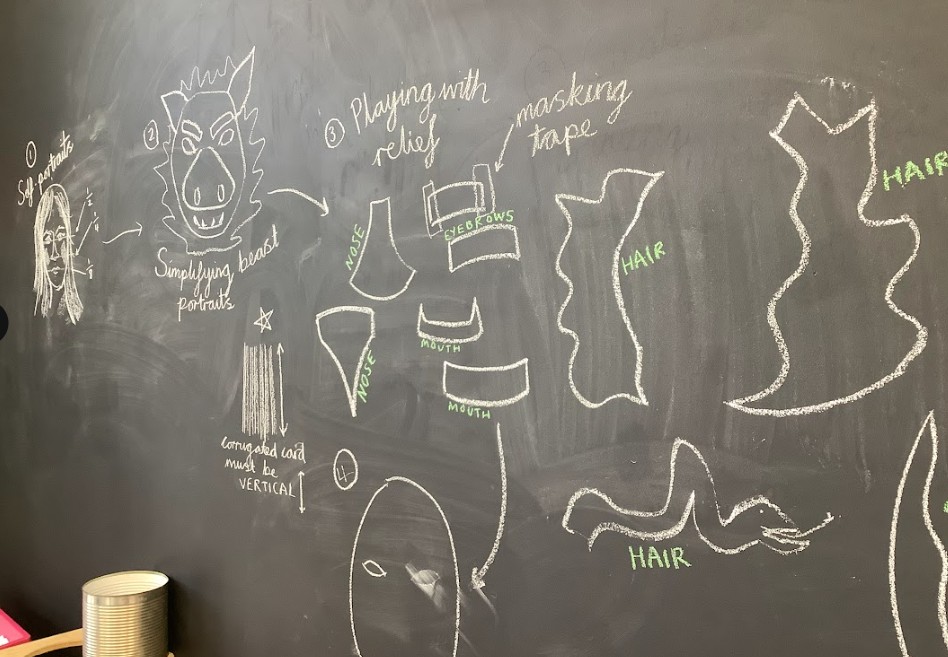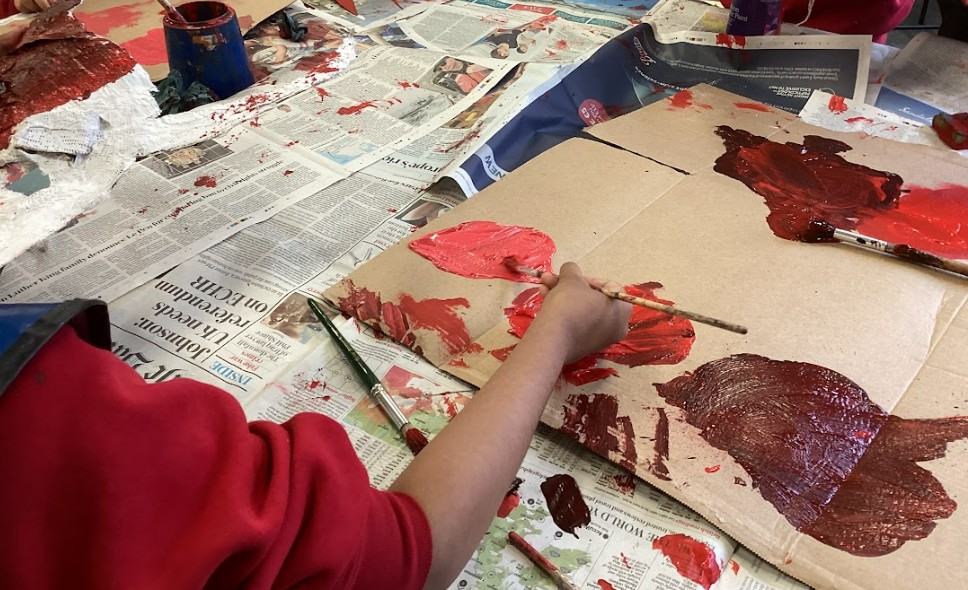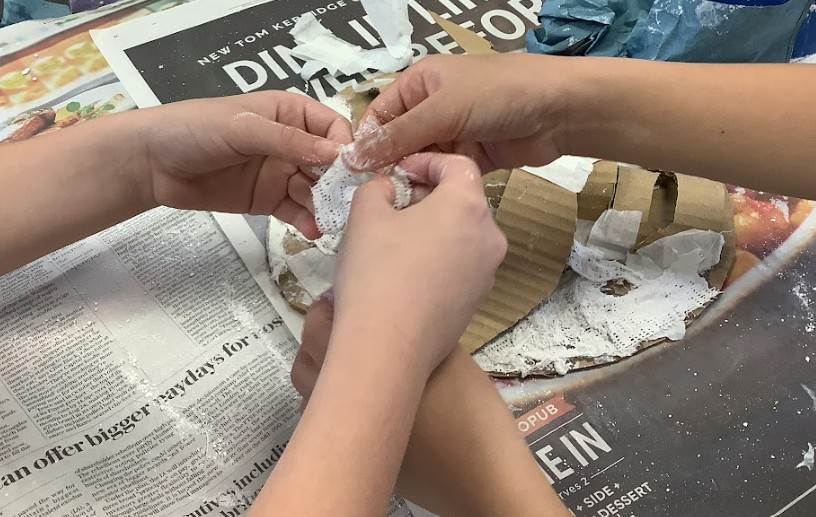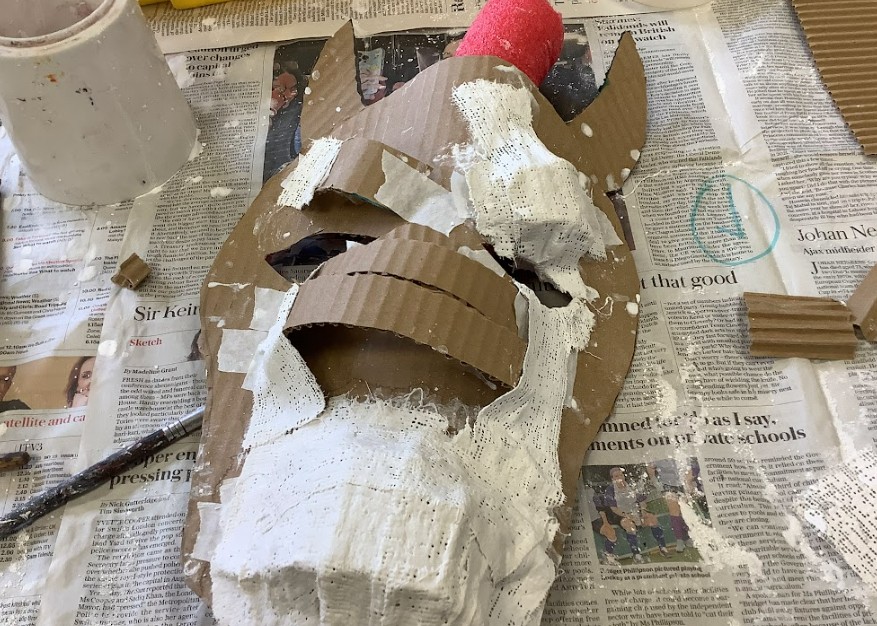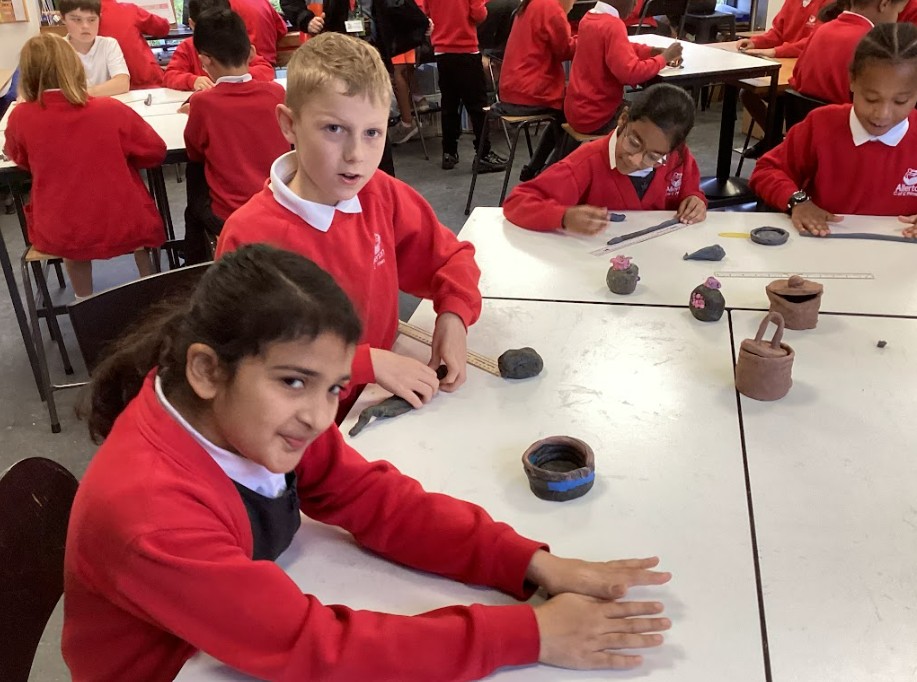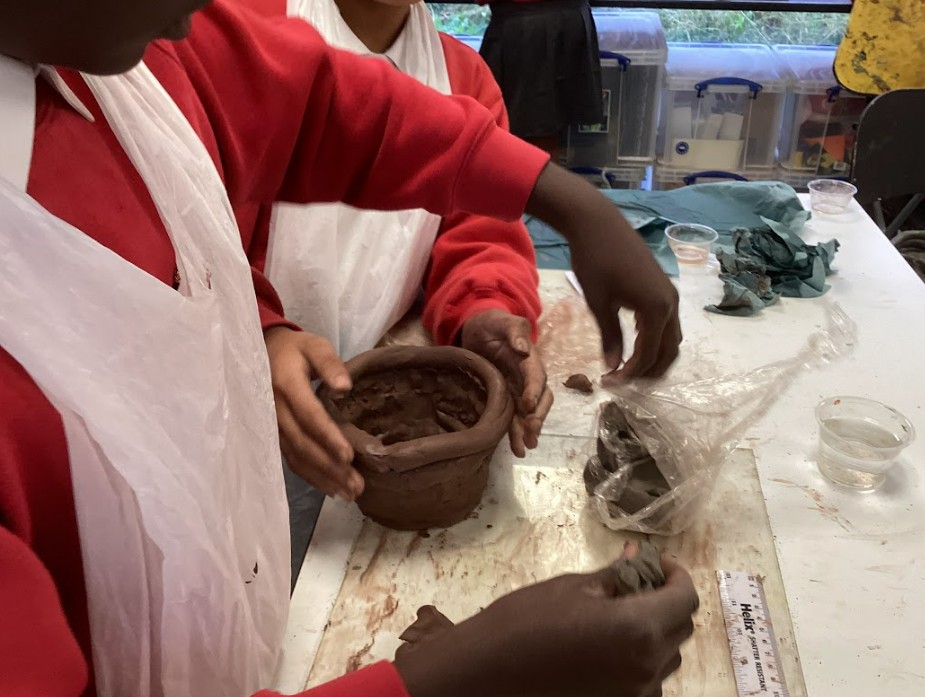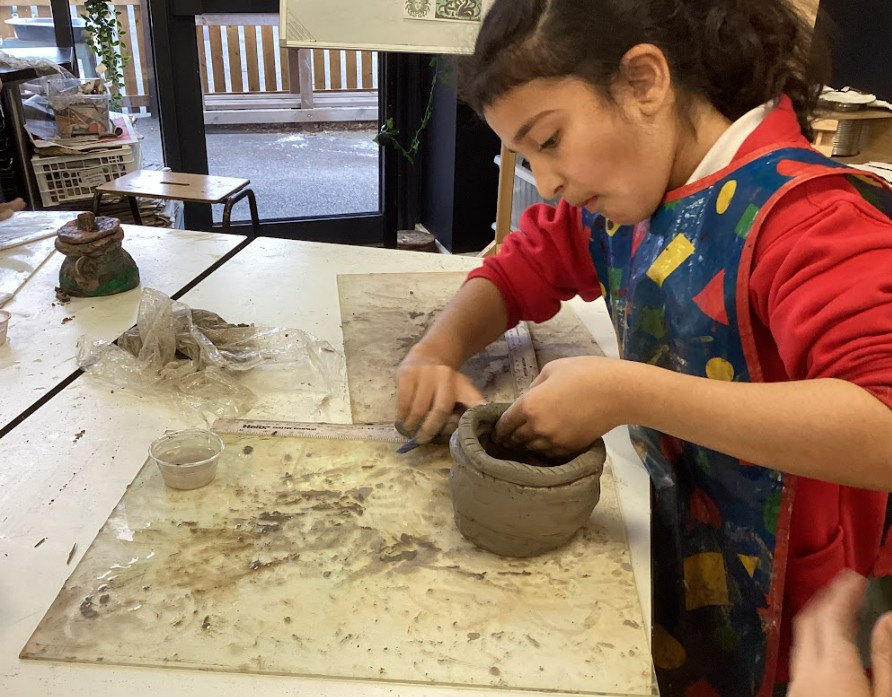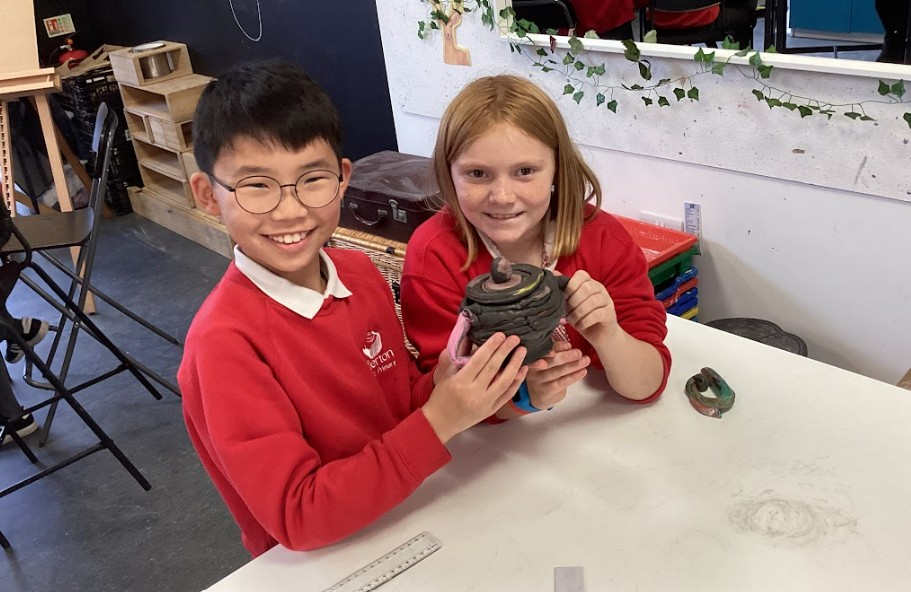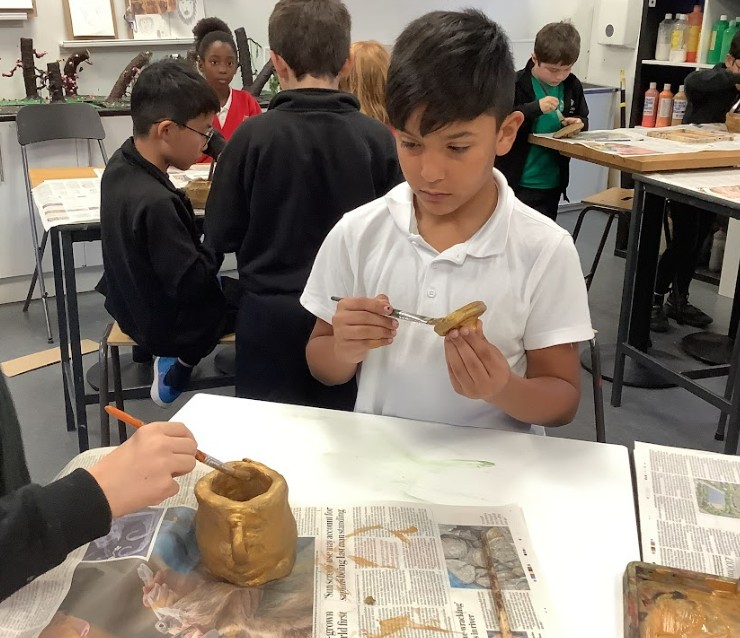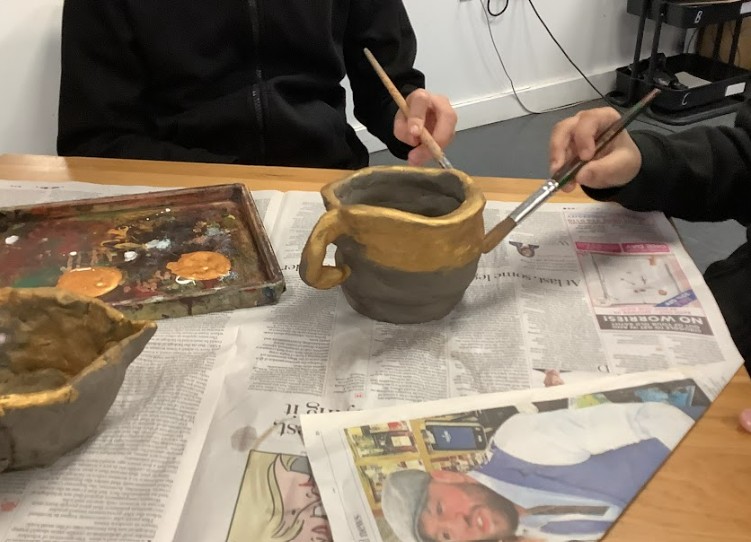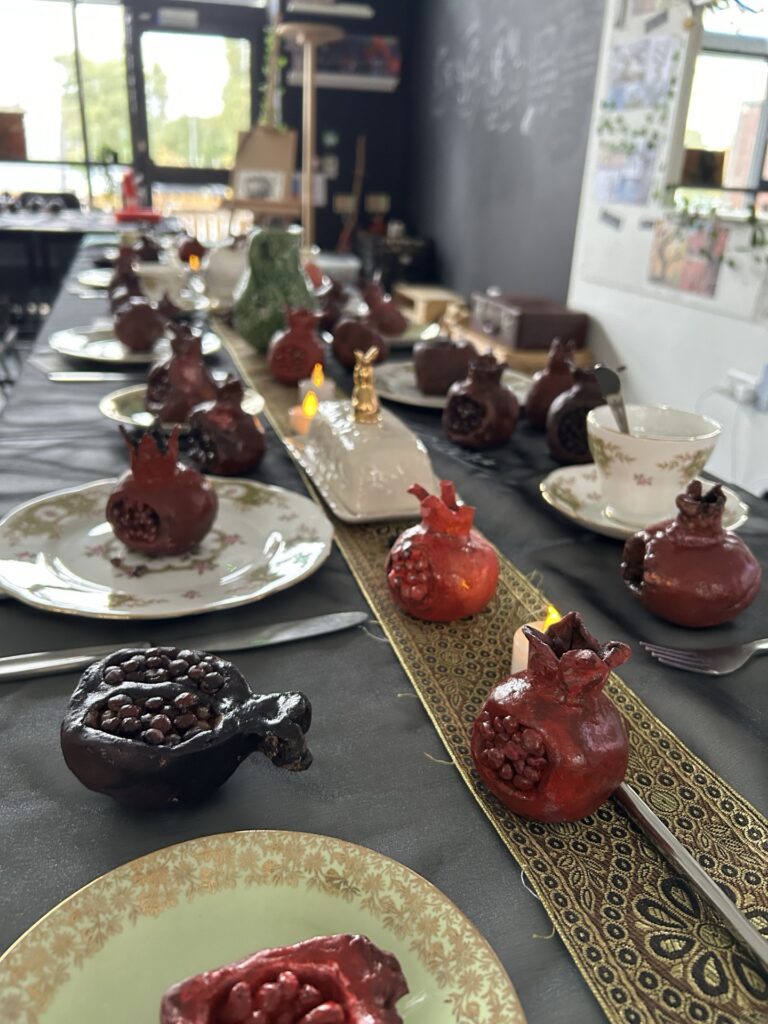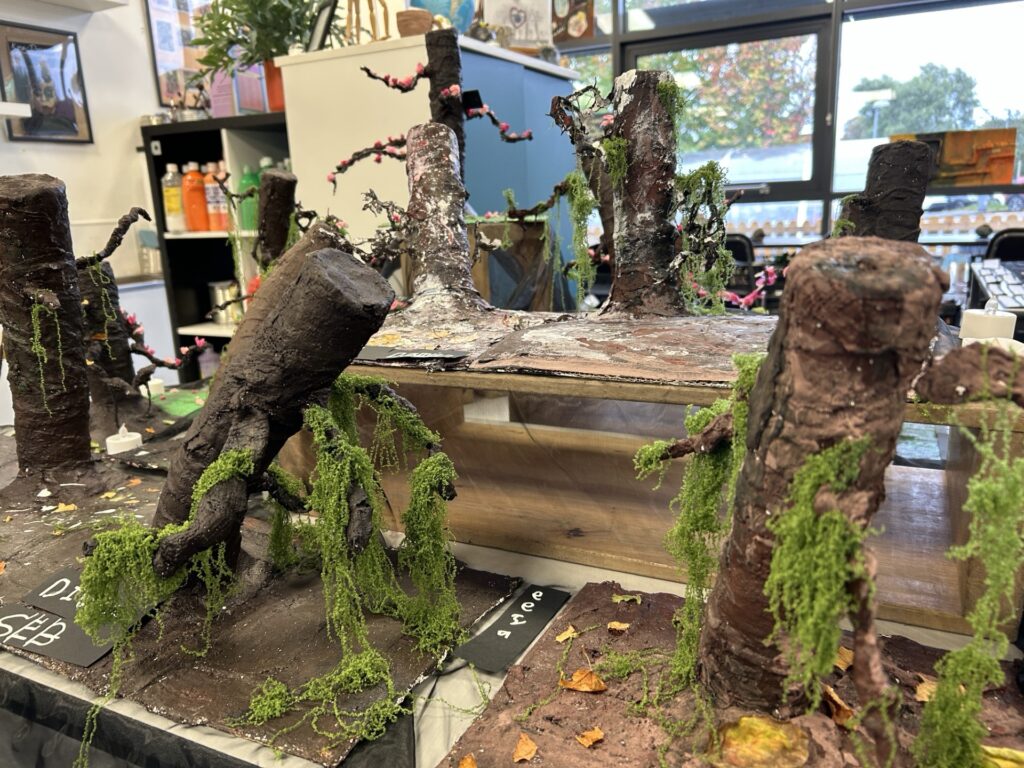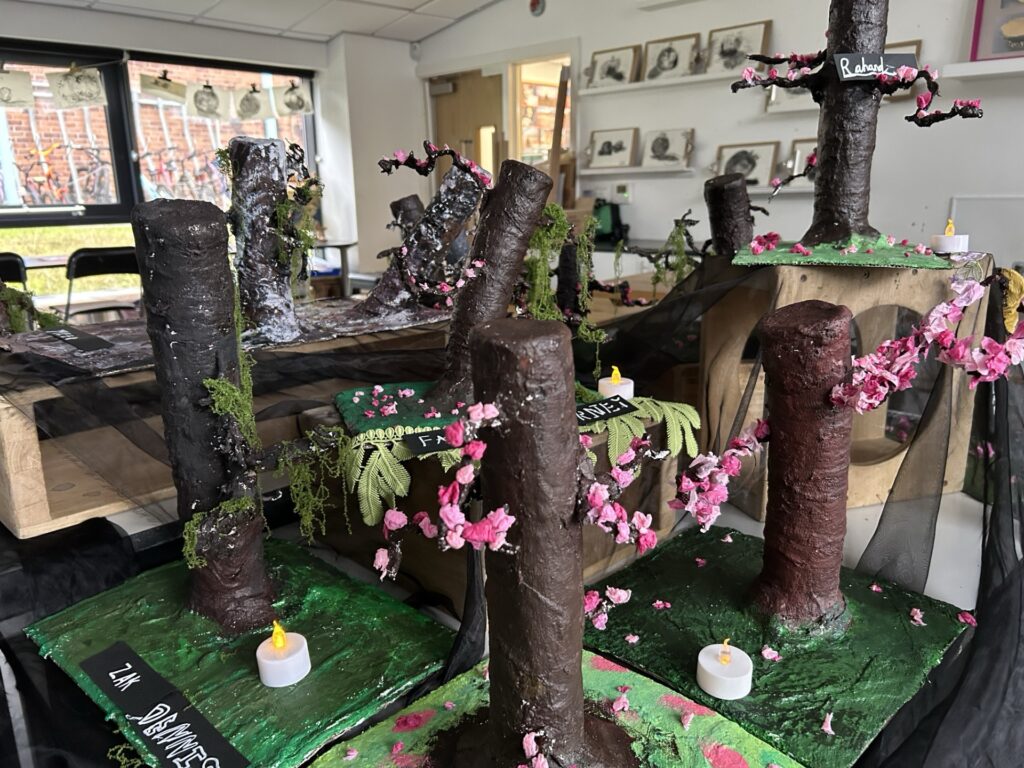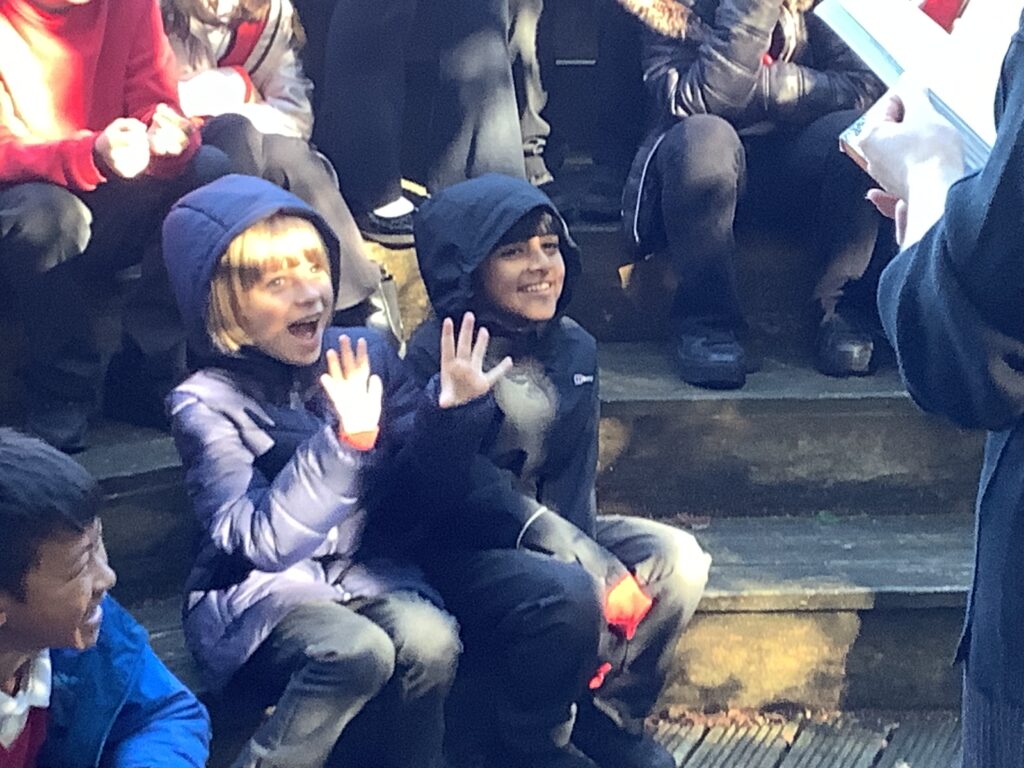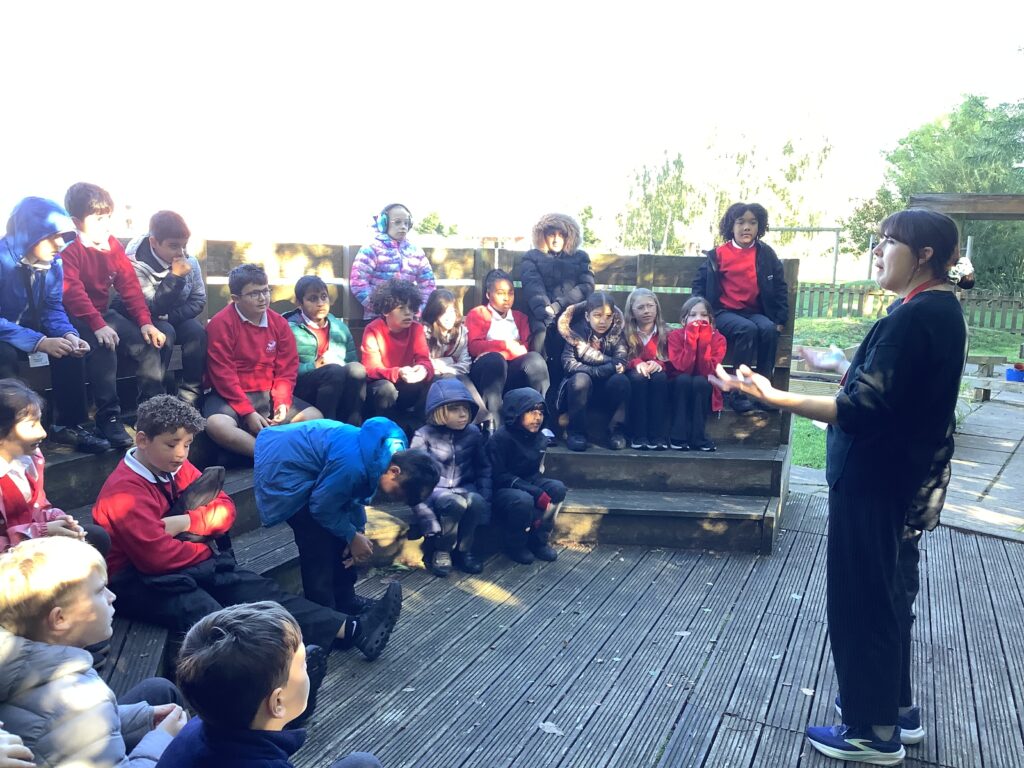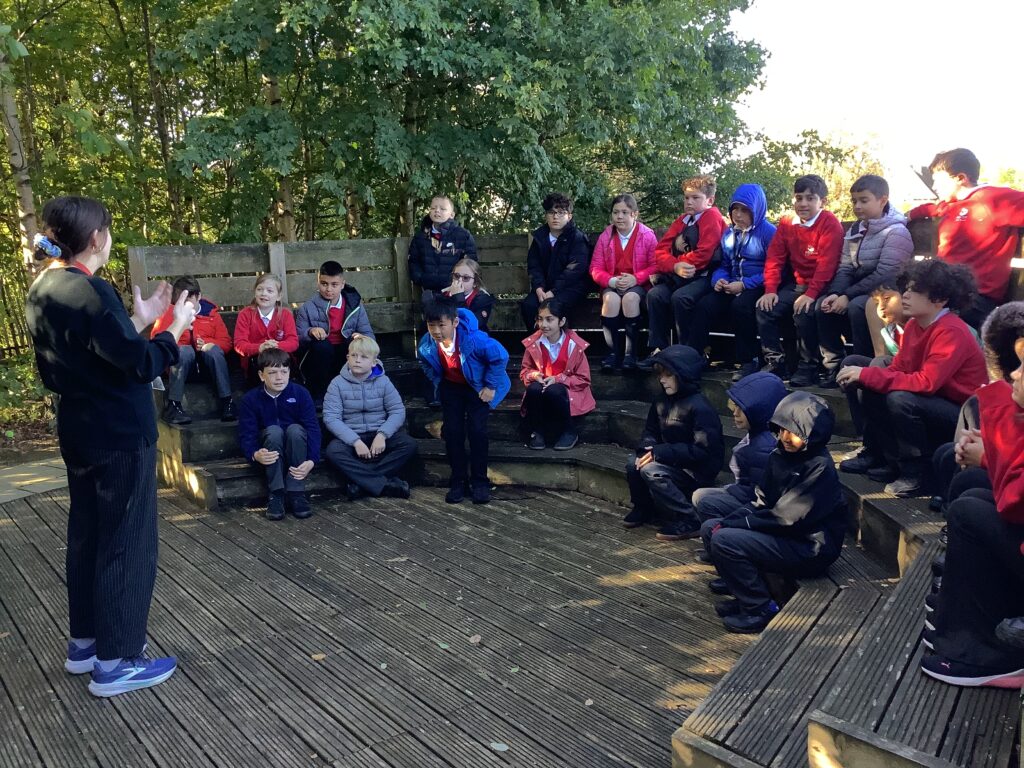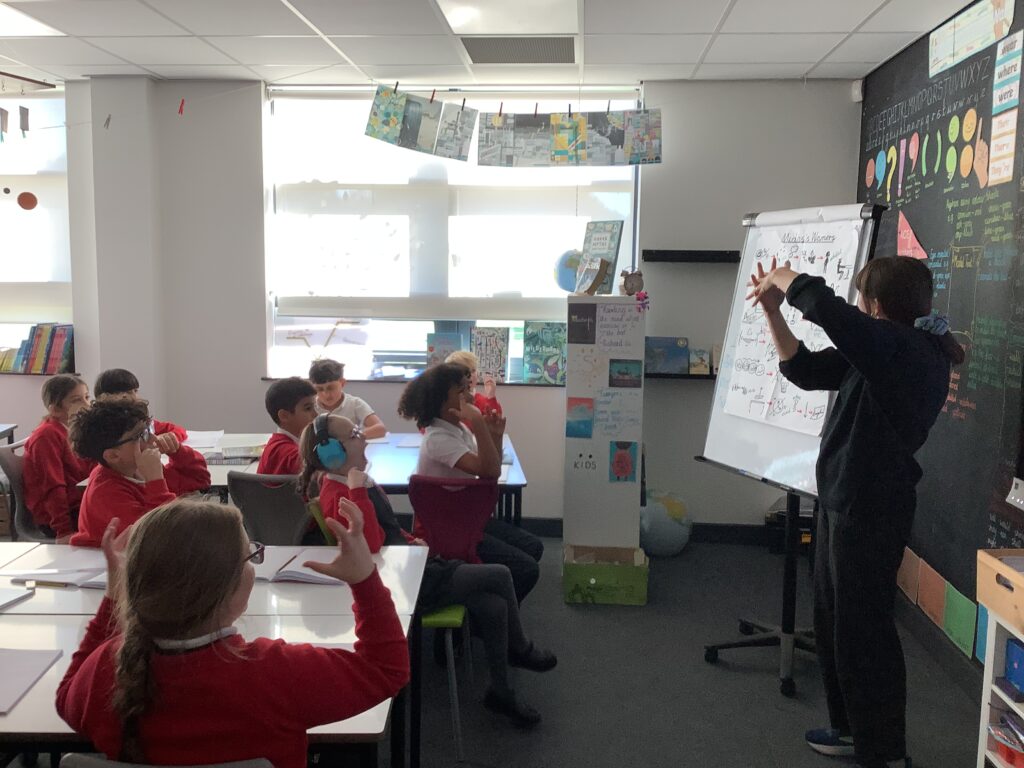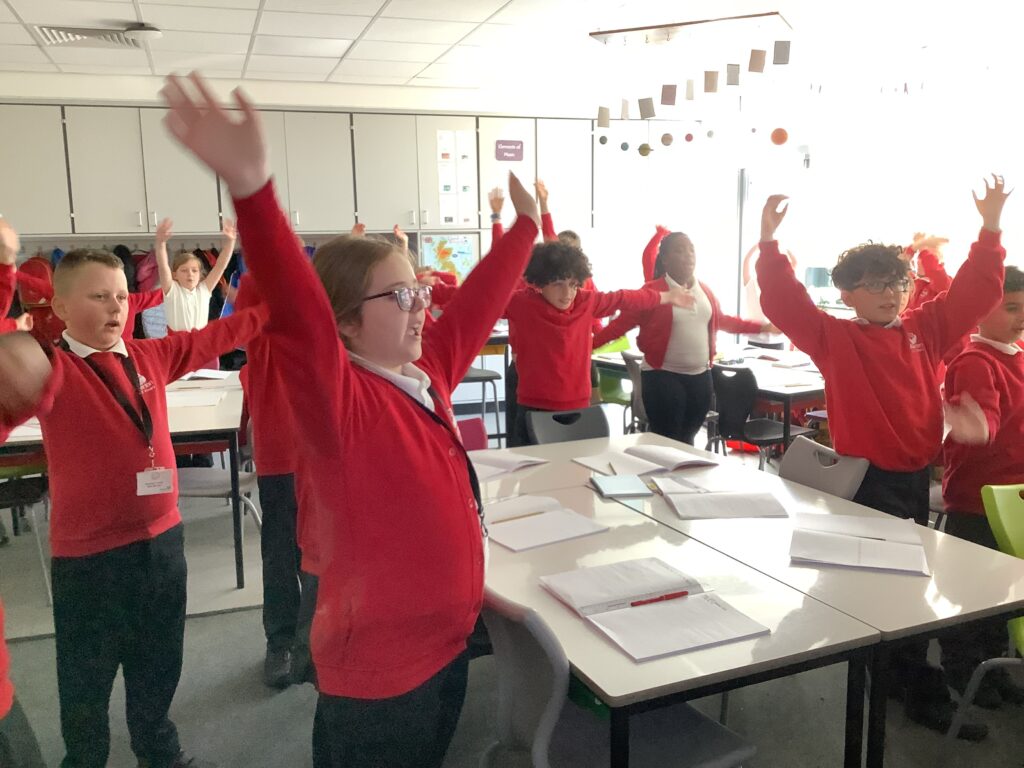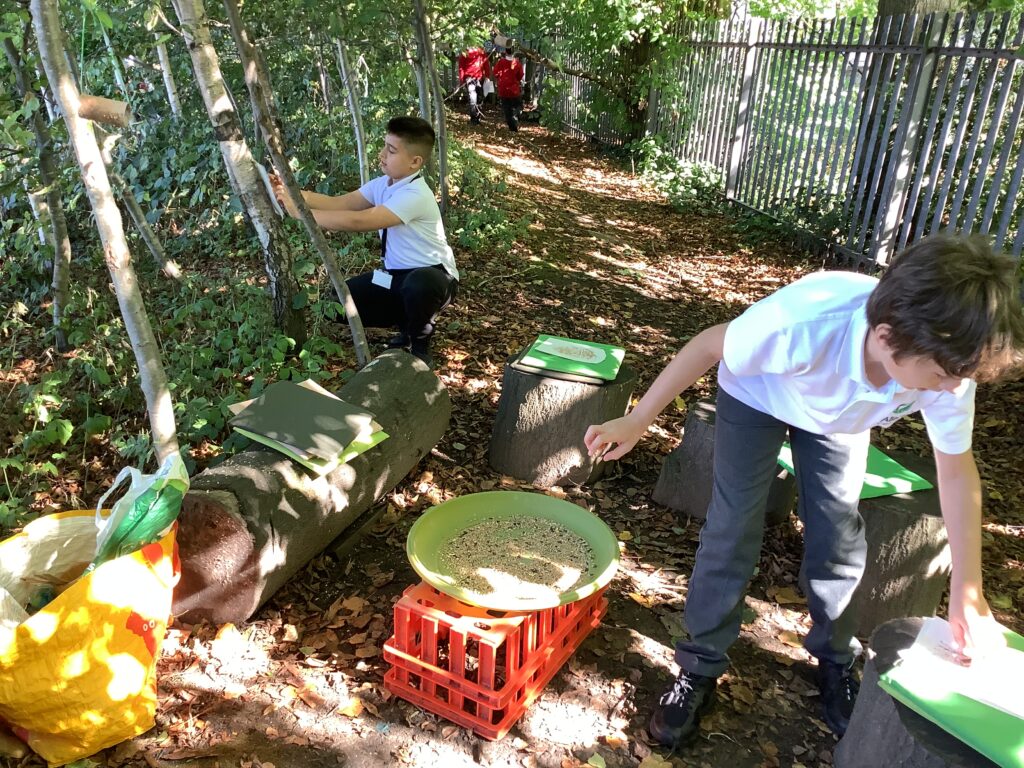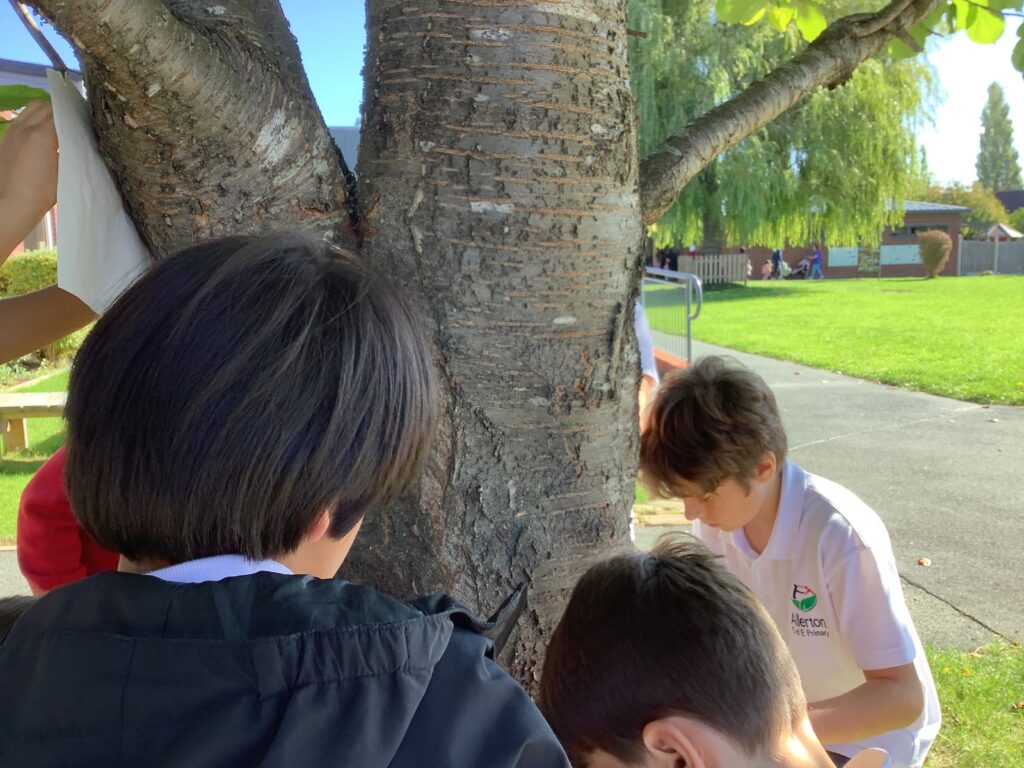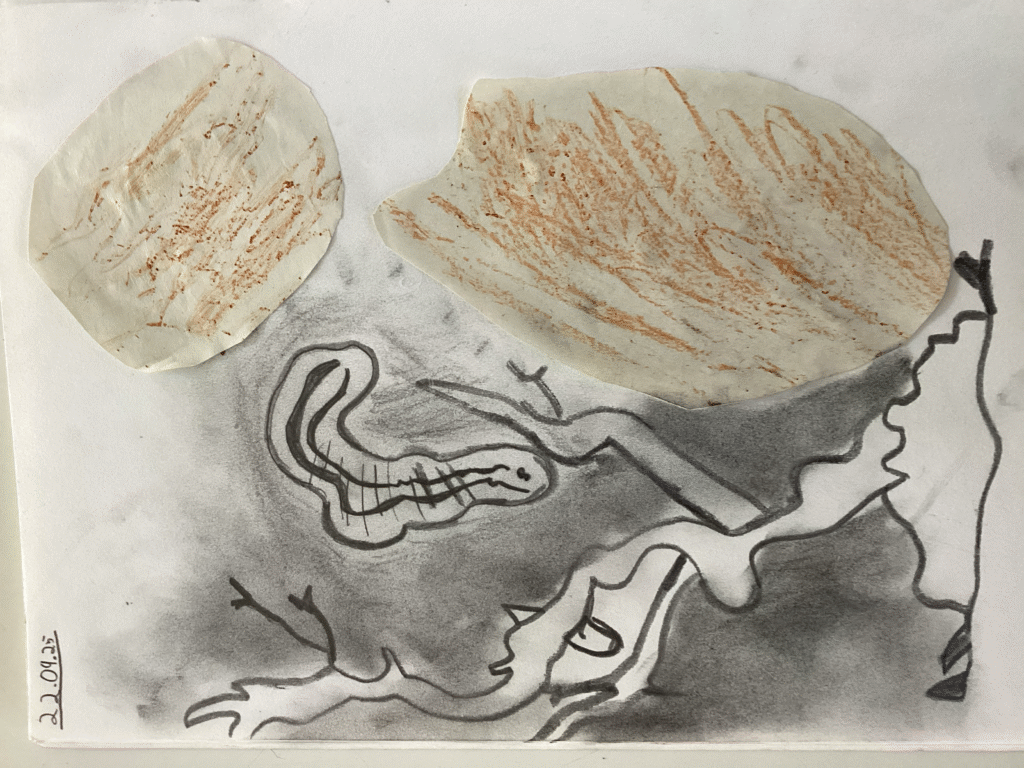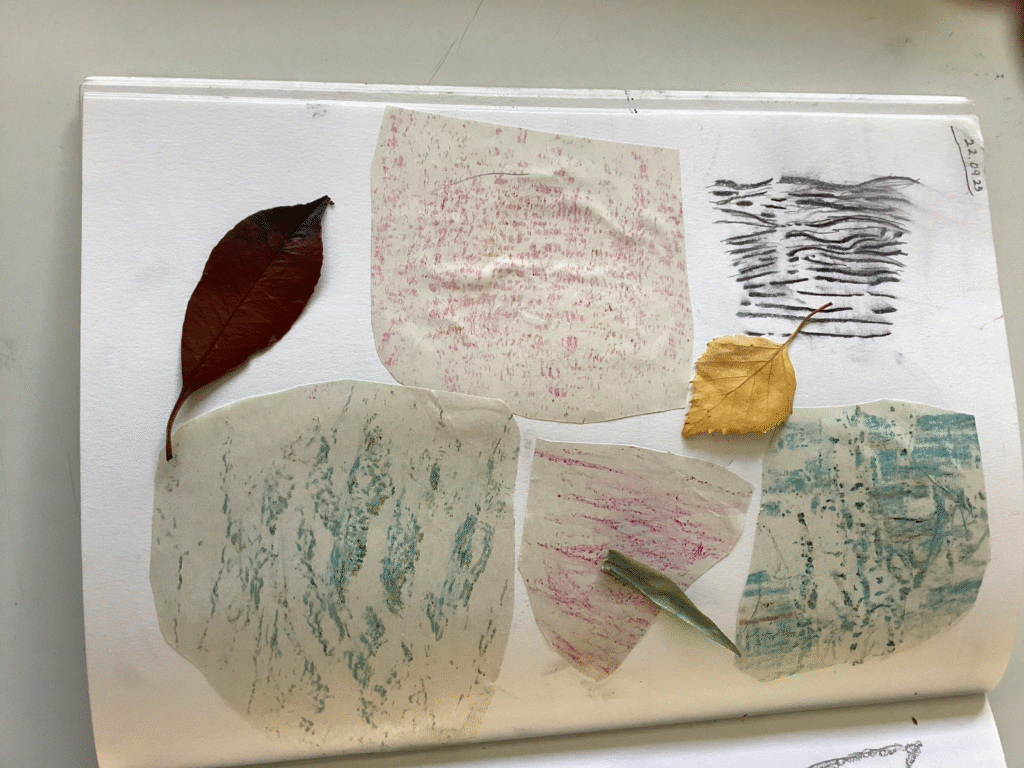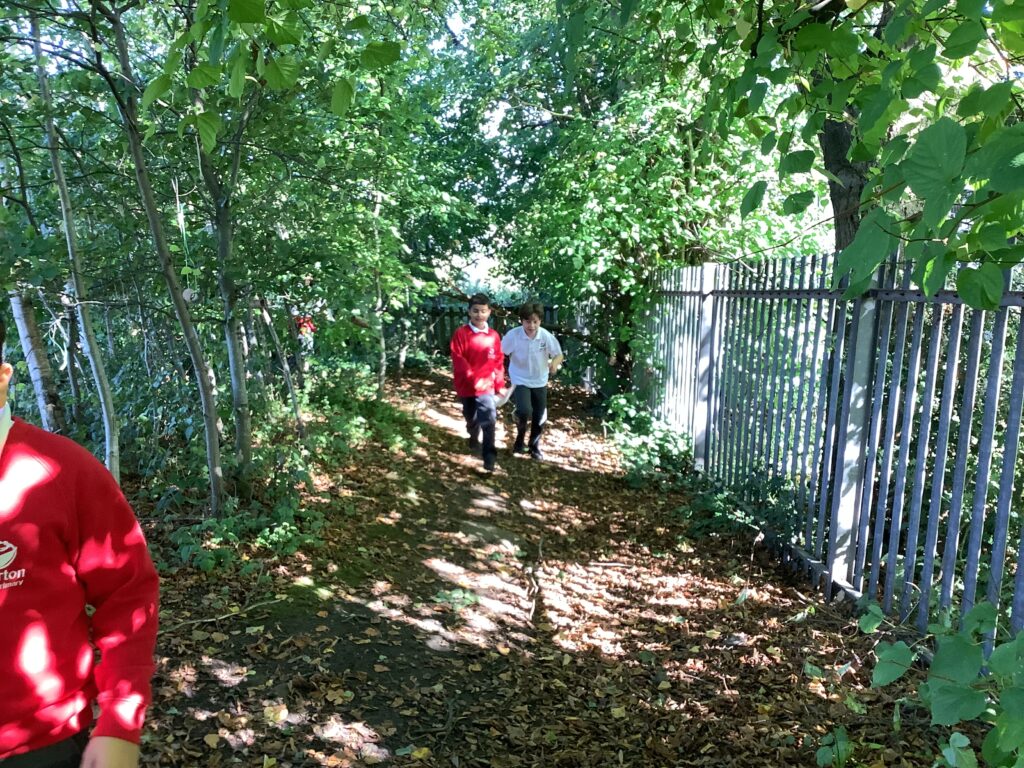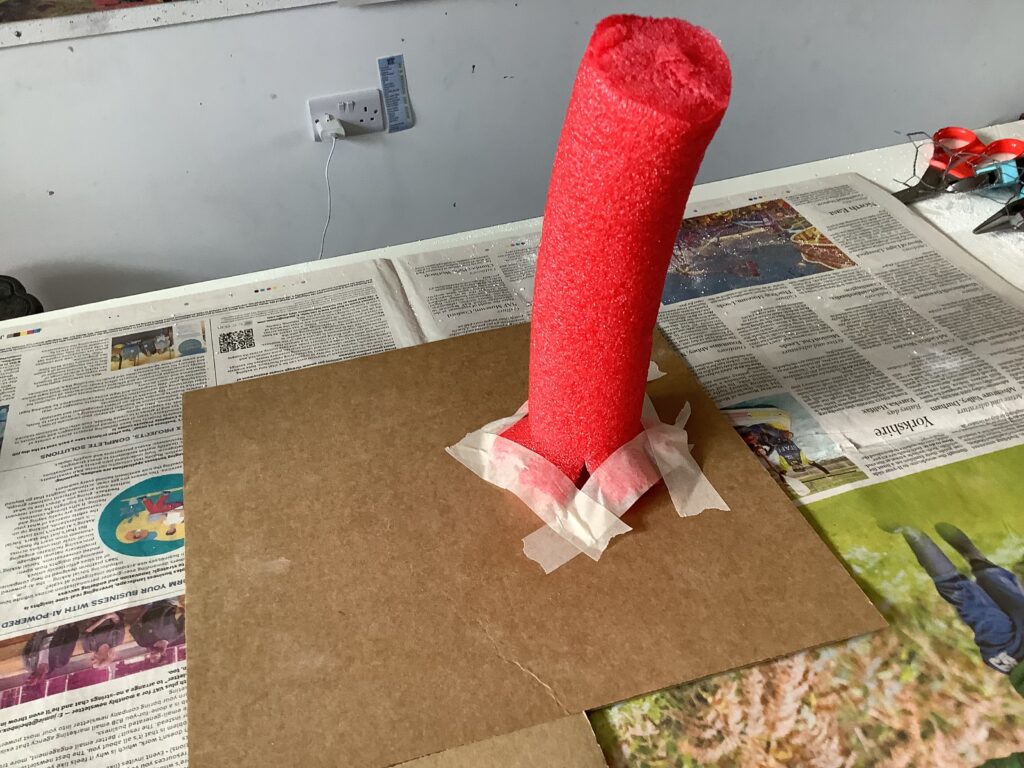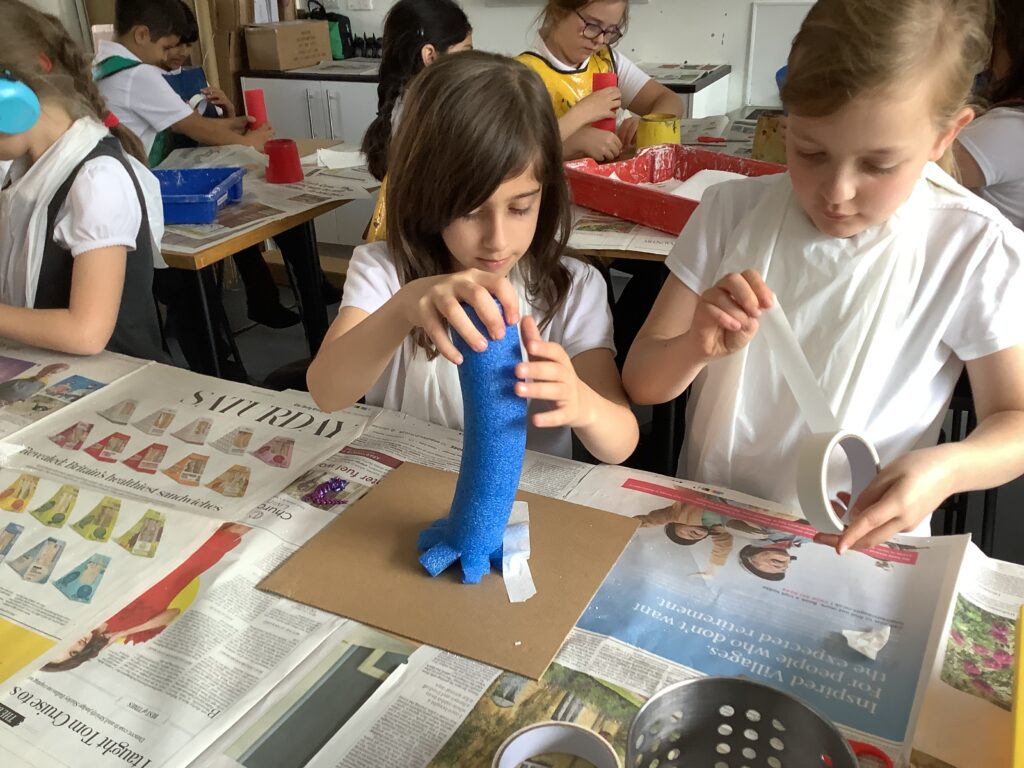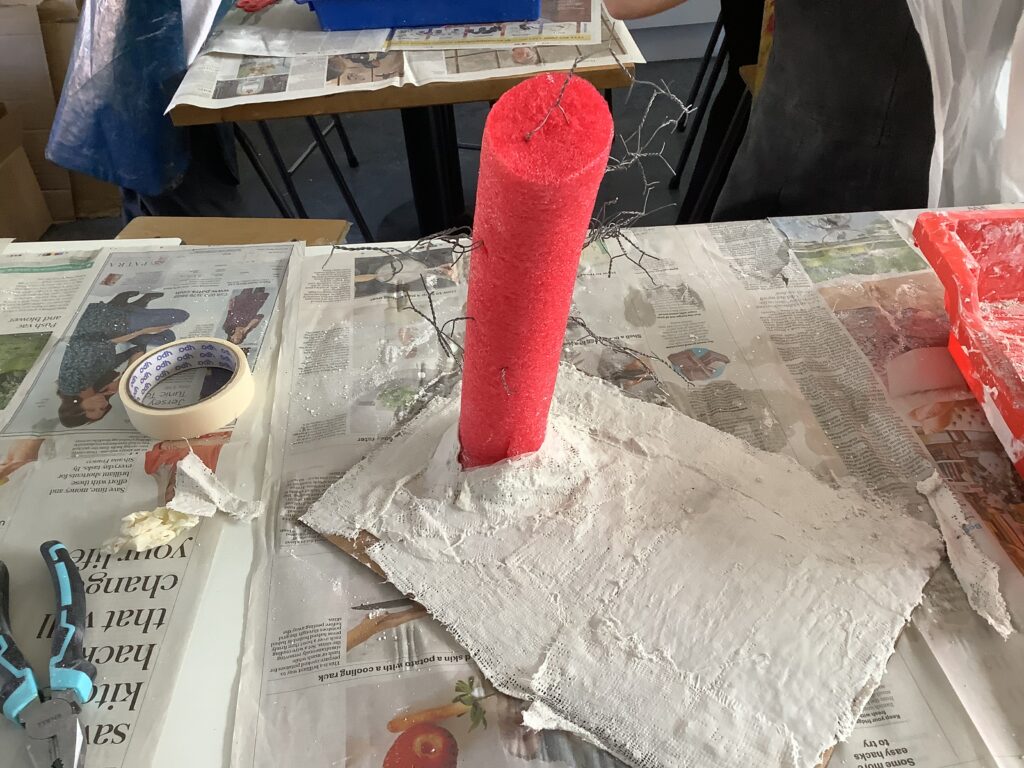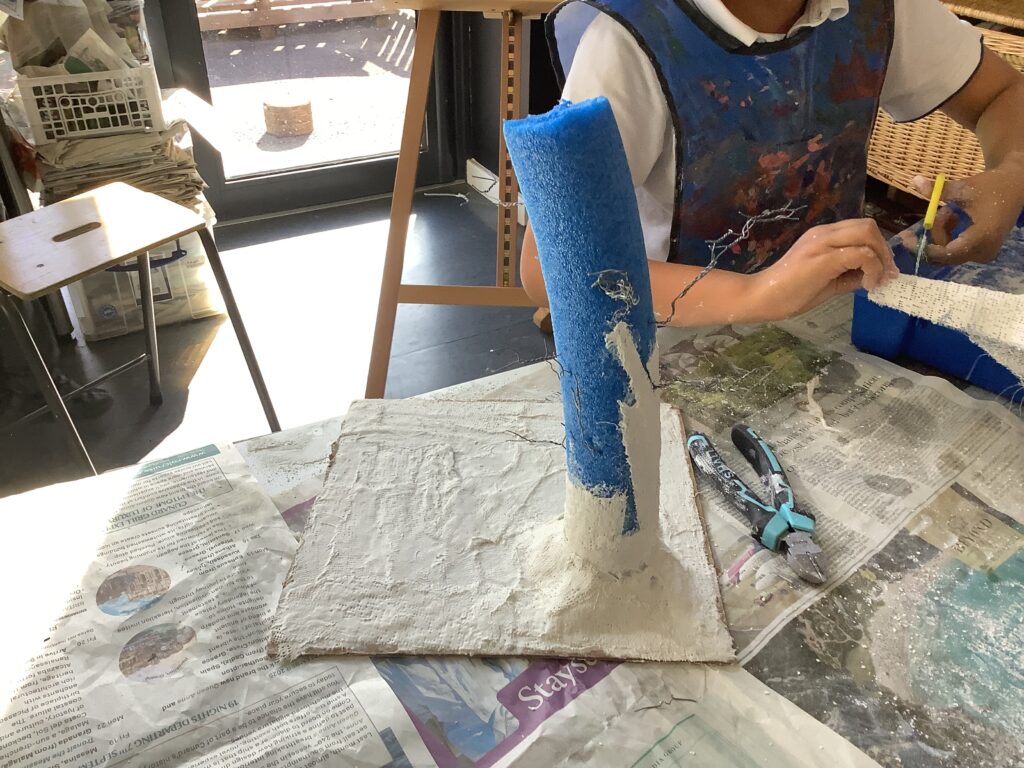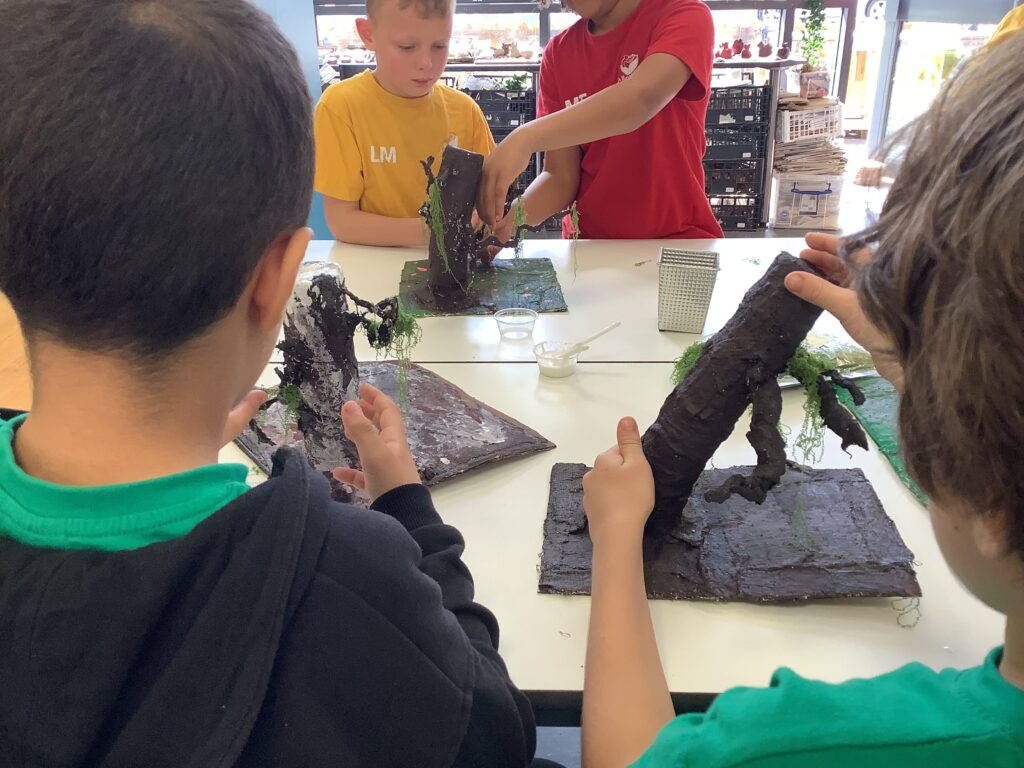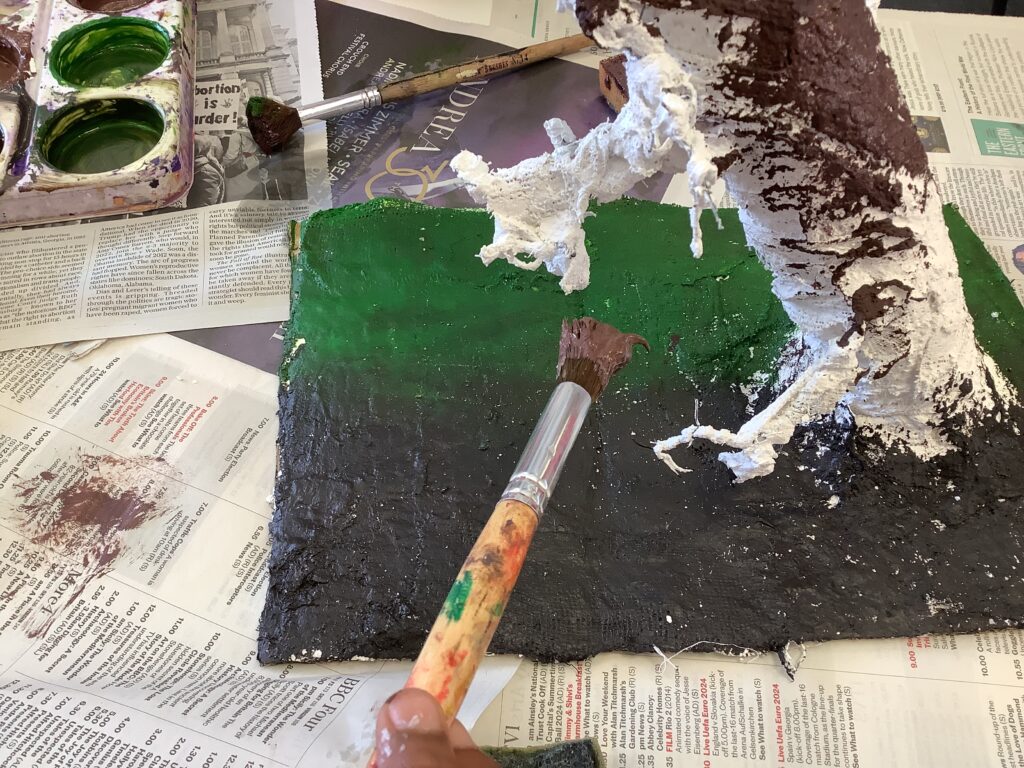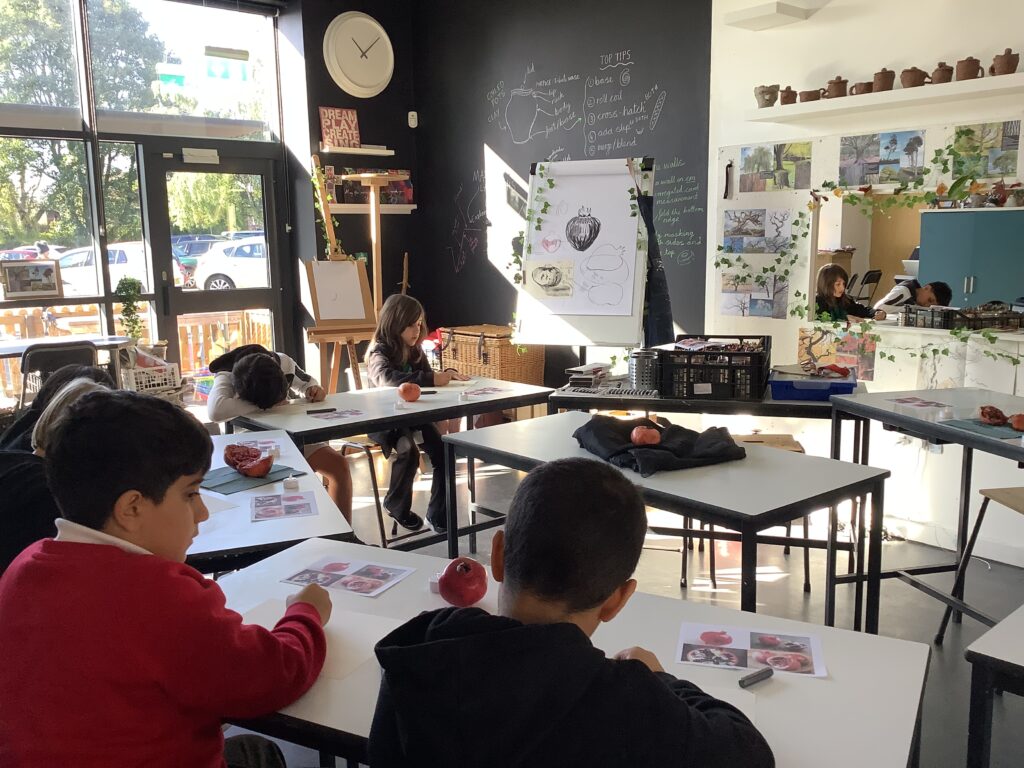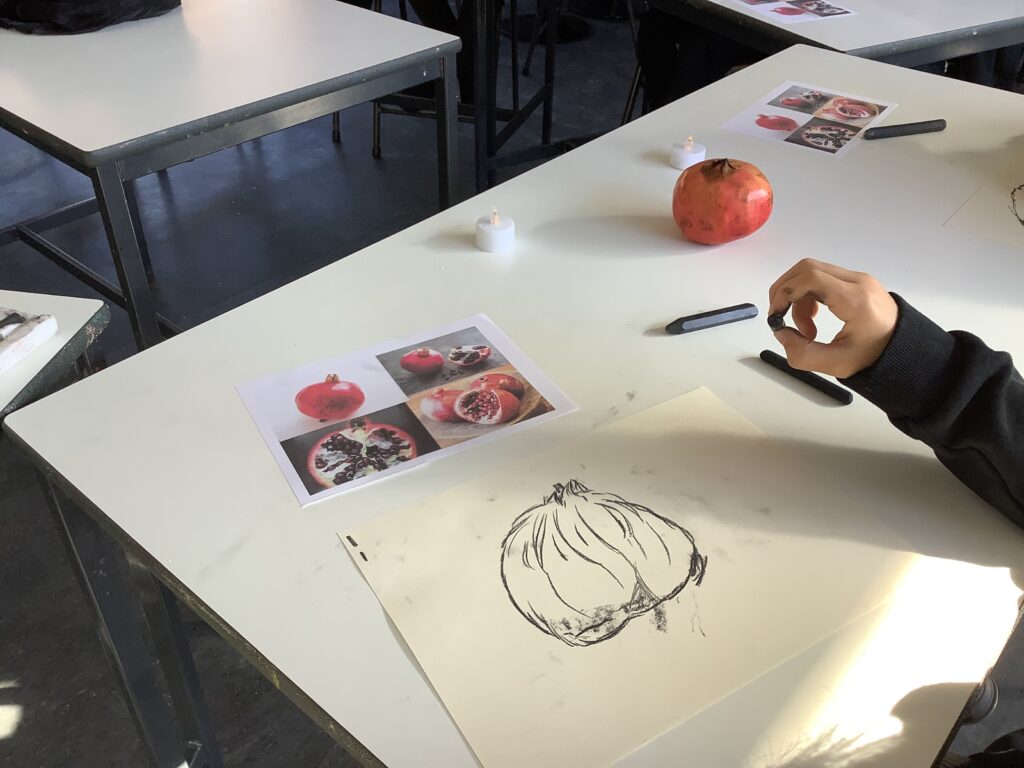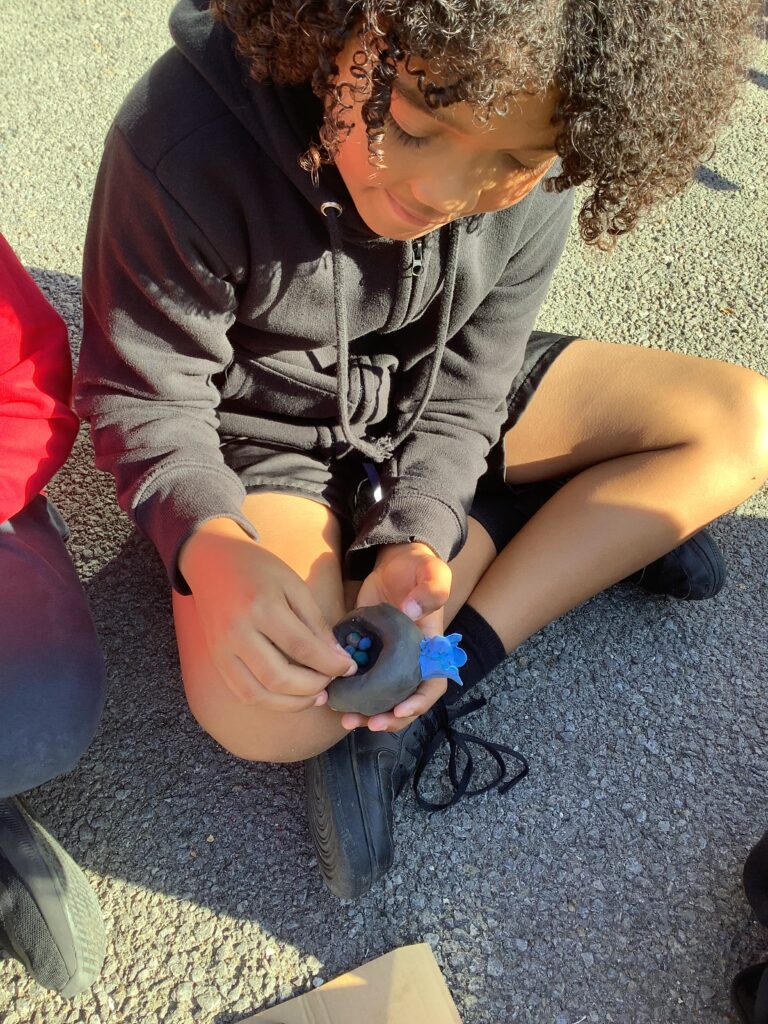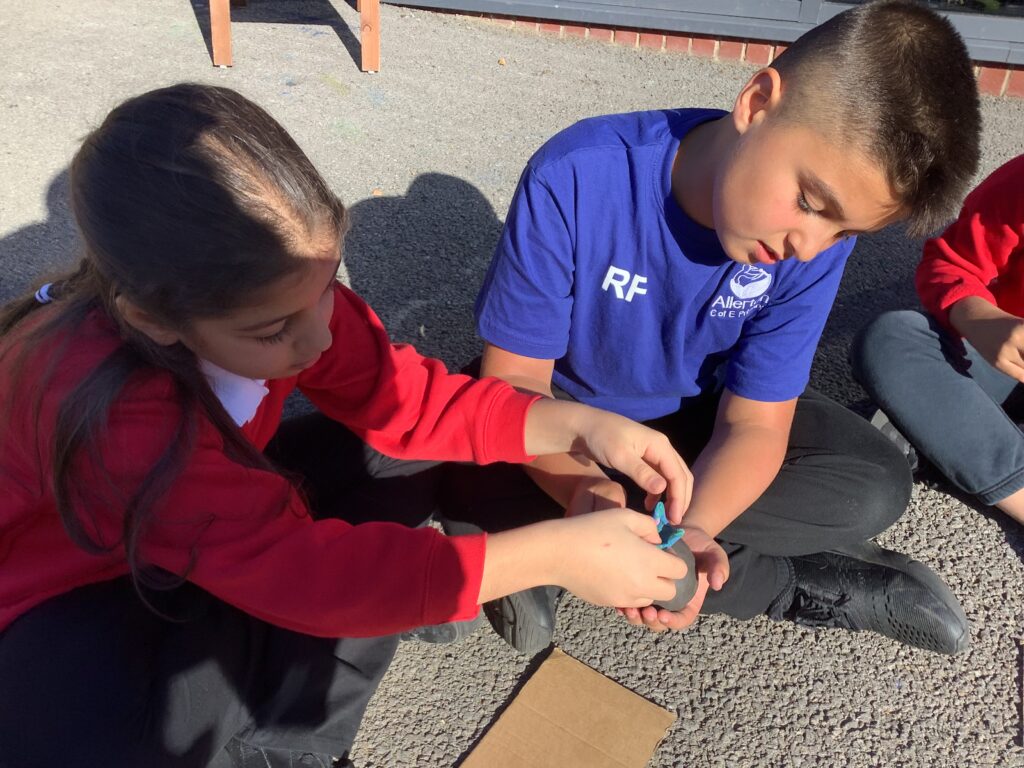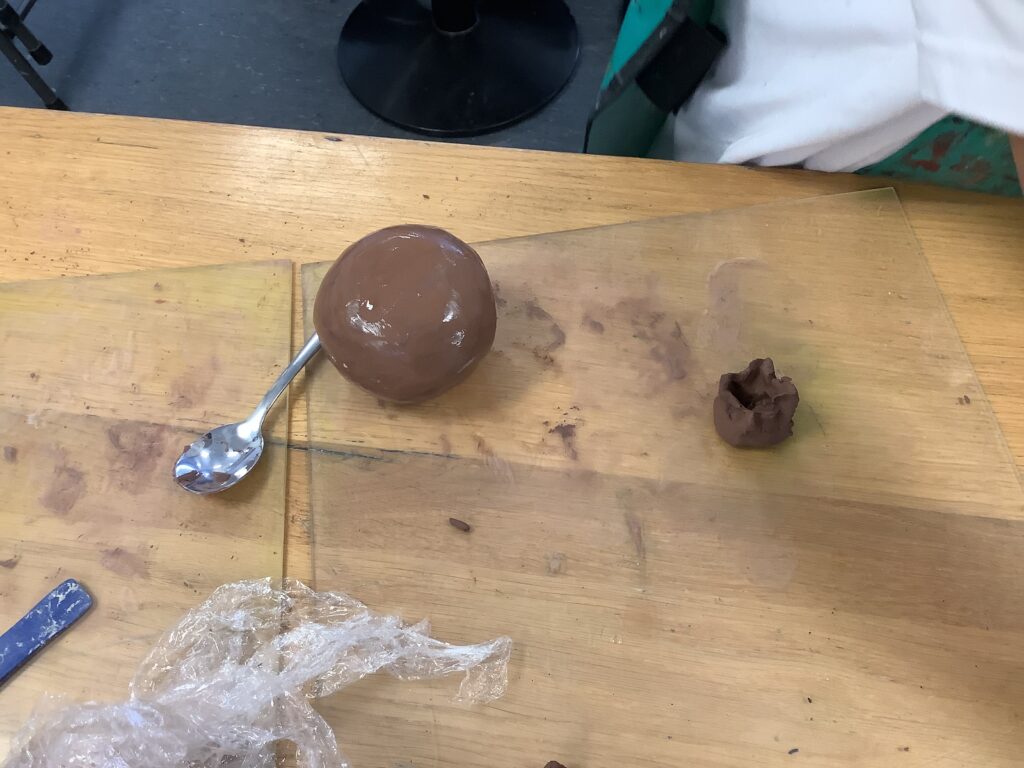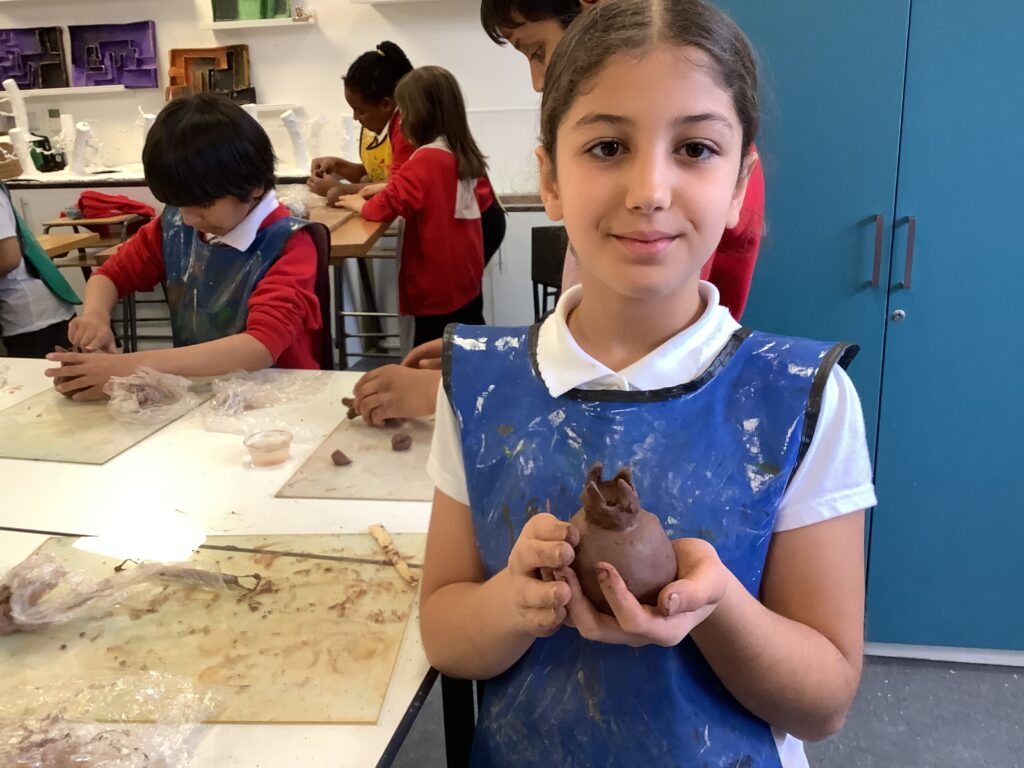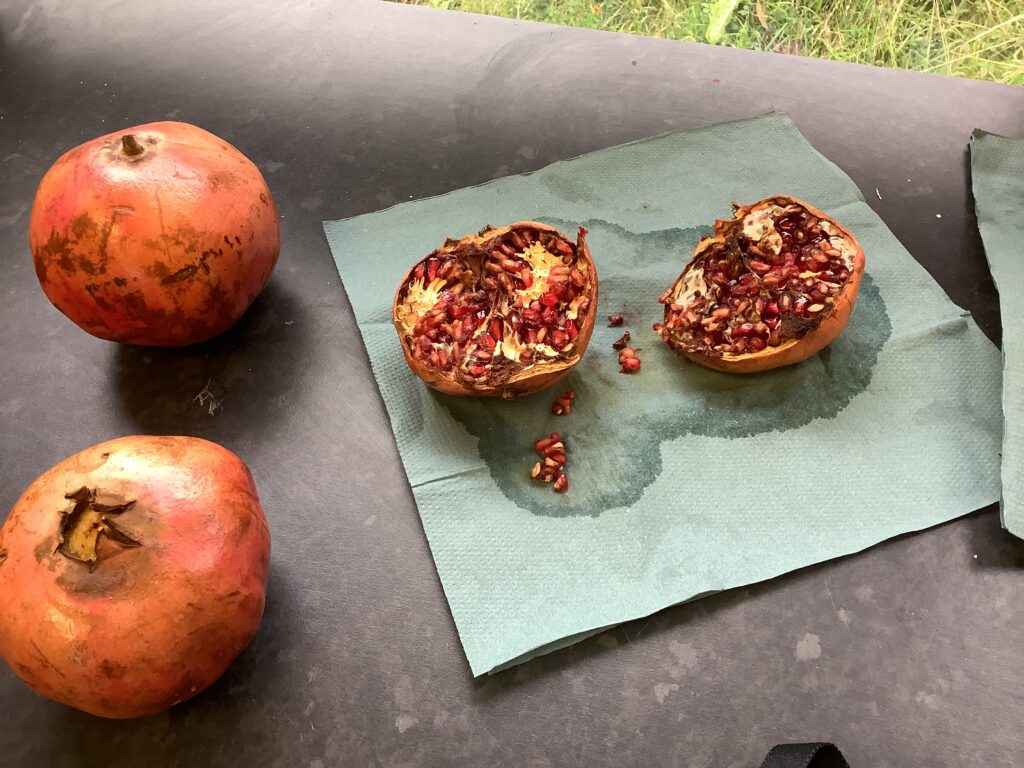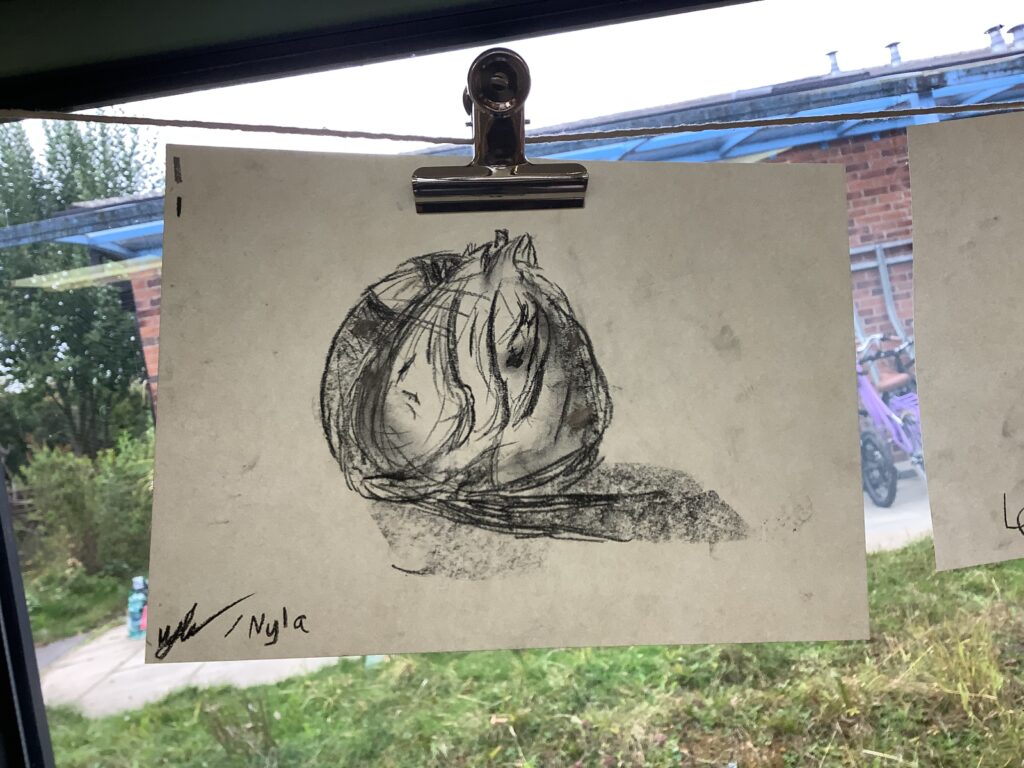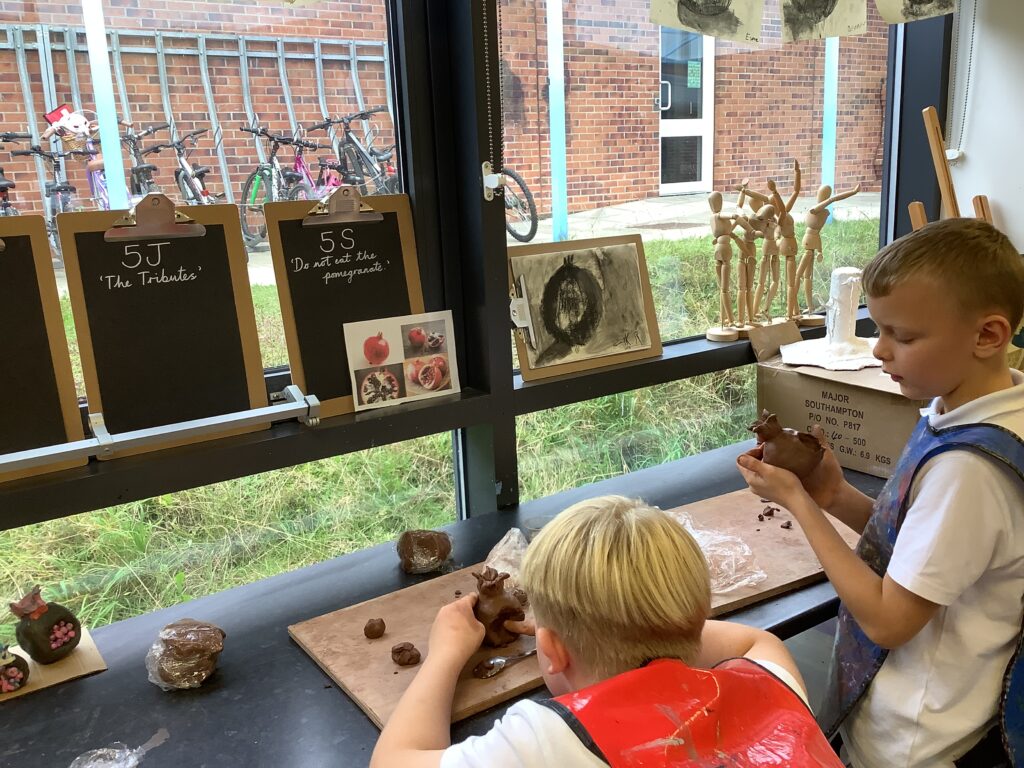Over two lively weeks, 4DA embraced a burst of studio creativity filled with drawing, printing, dancing and even cooking. Here’s a short look at their fantastic journey.
We began with figure drawing to explore how bodies move. Pupils used large, gestural drawing to capture action quickly then applied their understanding of proportions as they shifted into designing Iron Man–style robots. They practised scaling up and sizing up and finished their bold robot artworks in chalk on black paper adding expressive shading and energetic movement lines.
At the same time, the class developed a dance piece to a Coldplay song which matched the Iron Man theme perfectly. There was also time to join Mrs Elliott for some delicious pizza making.
Later on pupils moved into portrait drawing and adapted these skills to invent cartoon robot faces. They cut out the different features then etched patterns into tiles and printed with water based ink printing to add texture and detail. These printed pieces were assembled on backing boards with carefully chosen lines from The Iron Man supported by the typography practice they had done earlier.
A big well done 4DA for your imagination teamwork and brilliant effort throughout Arts Fortnight!
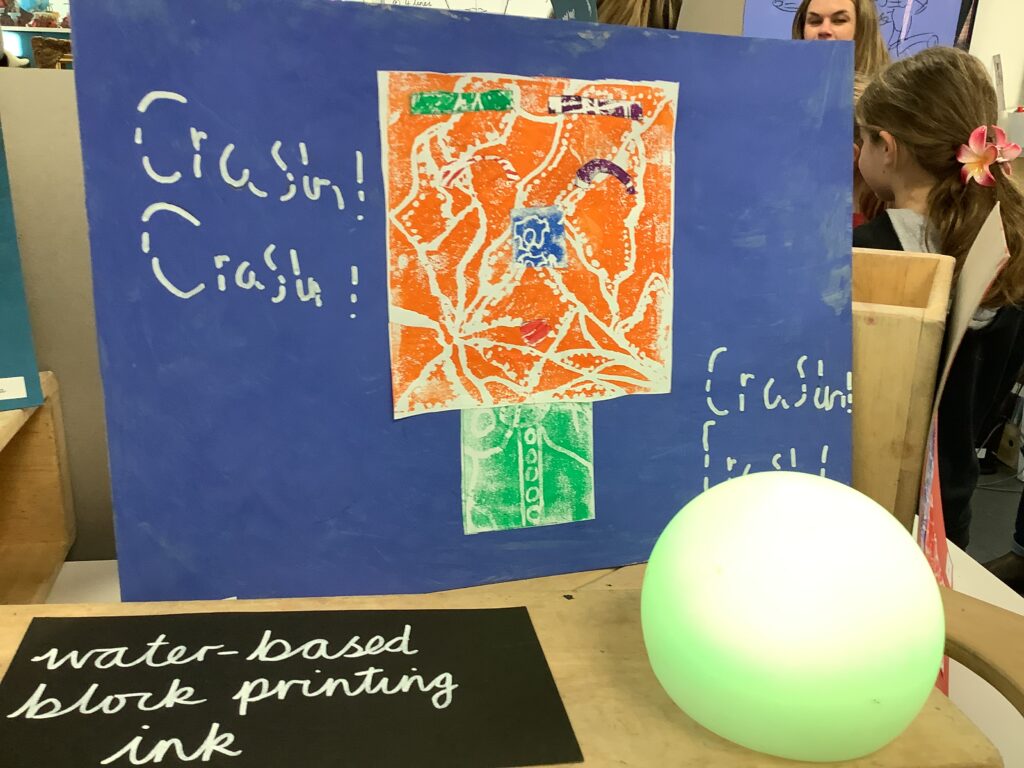
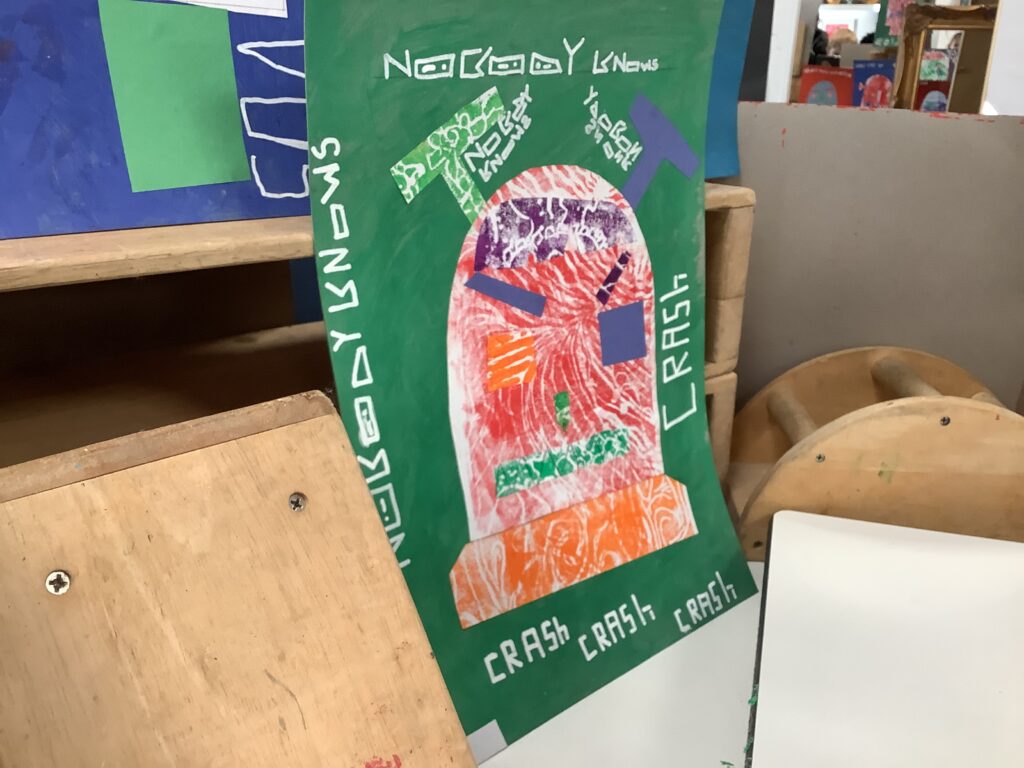
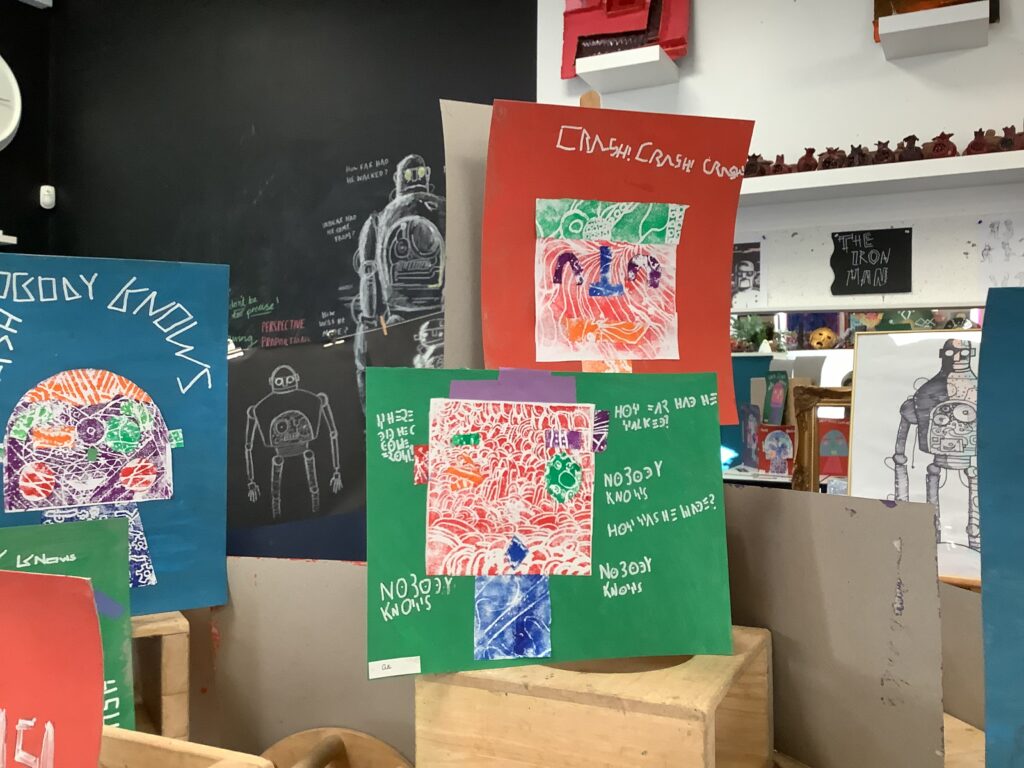
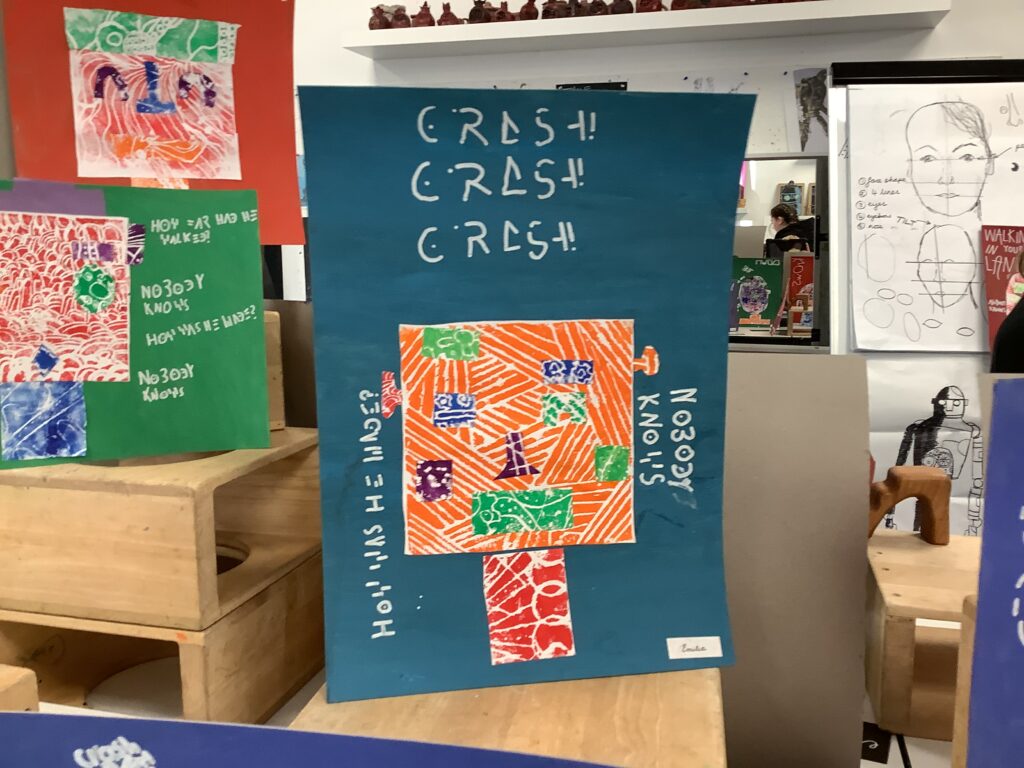
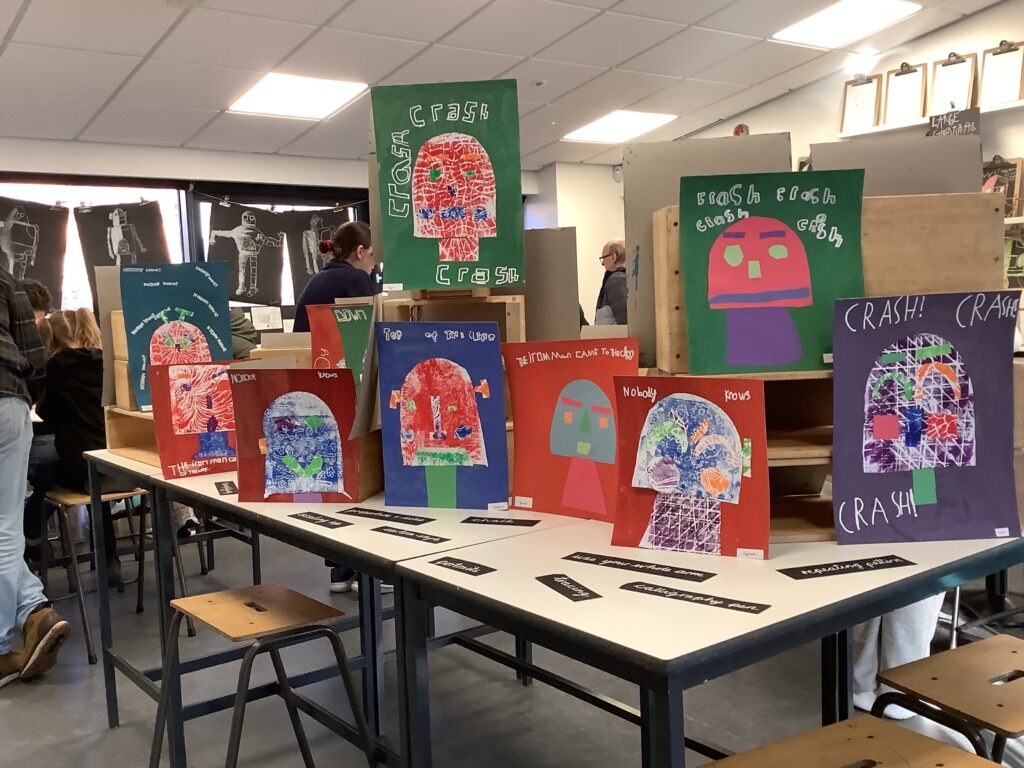
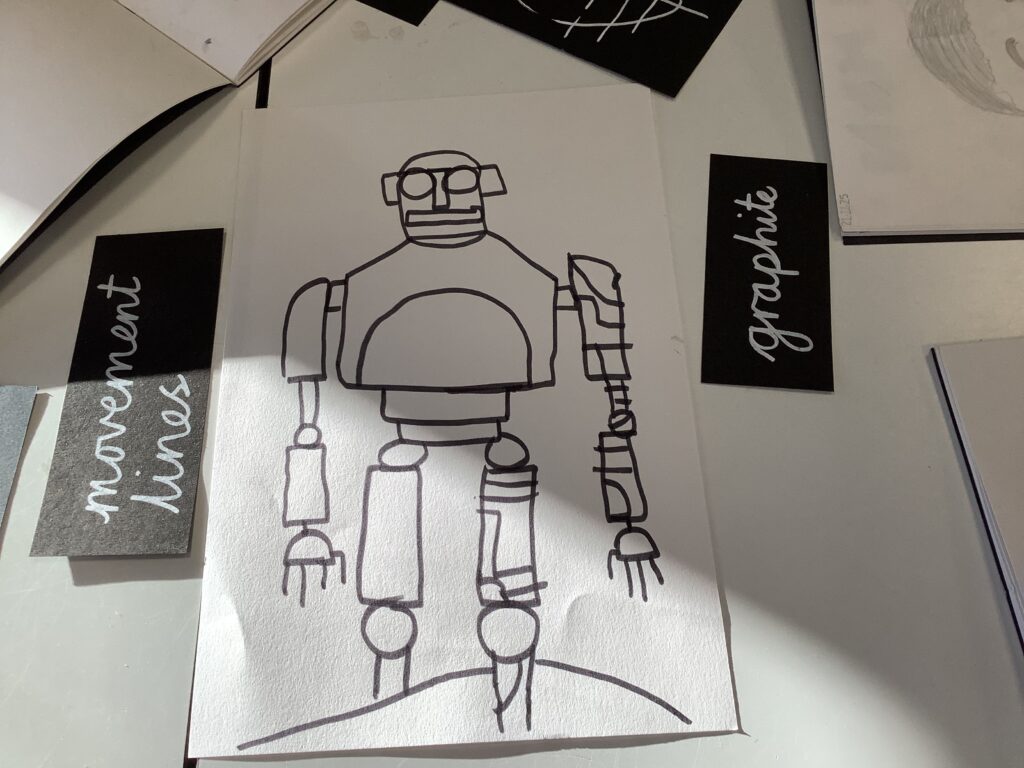
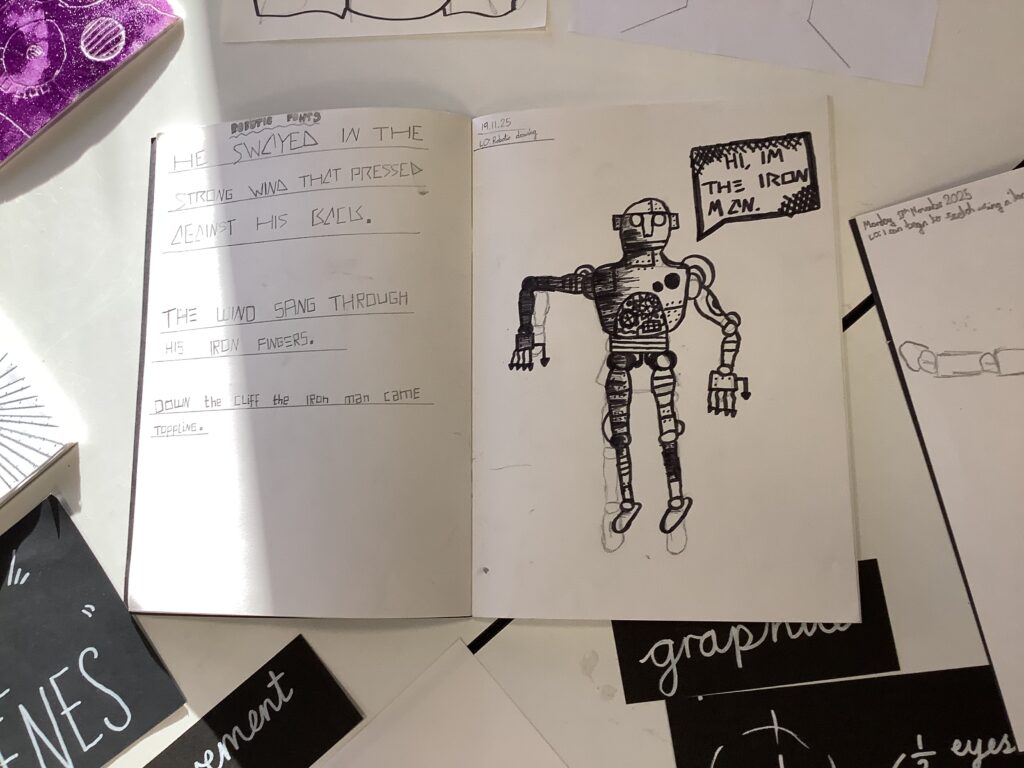
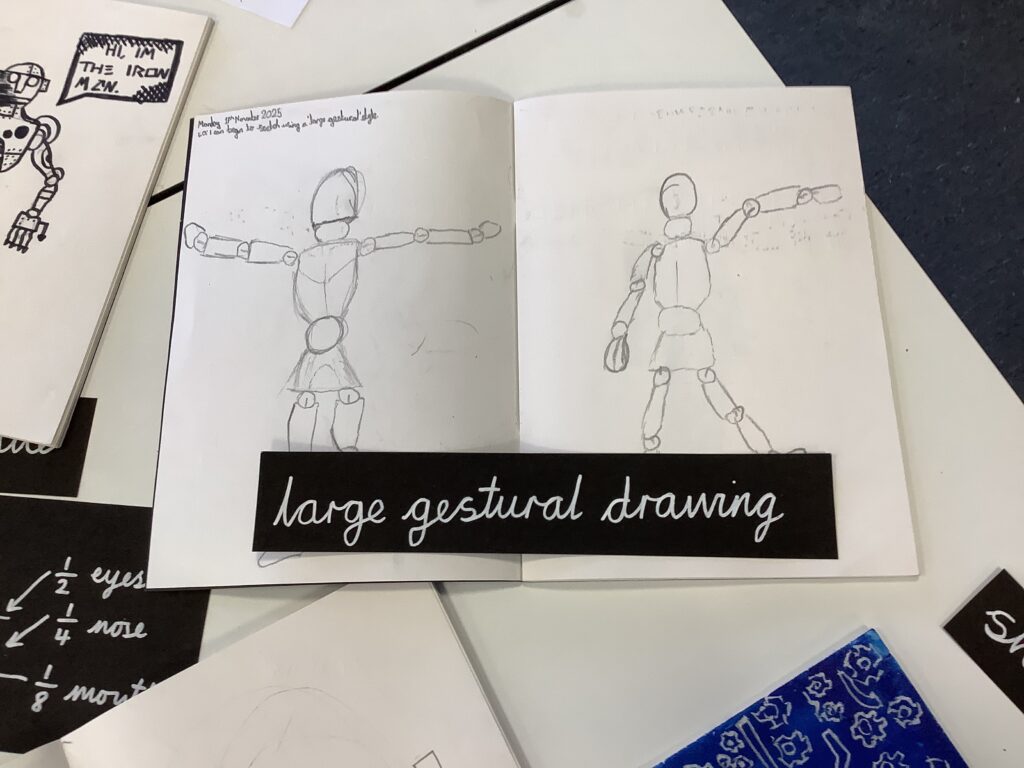
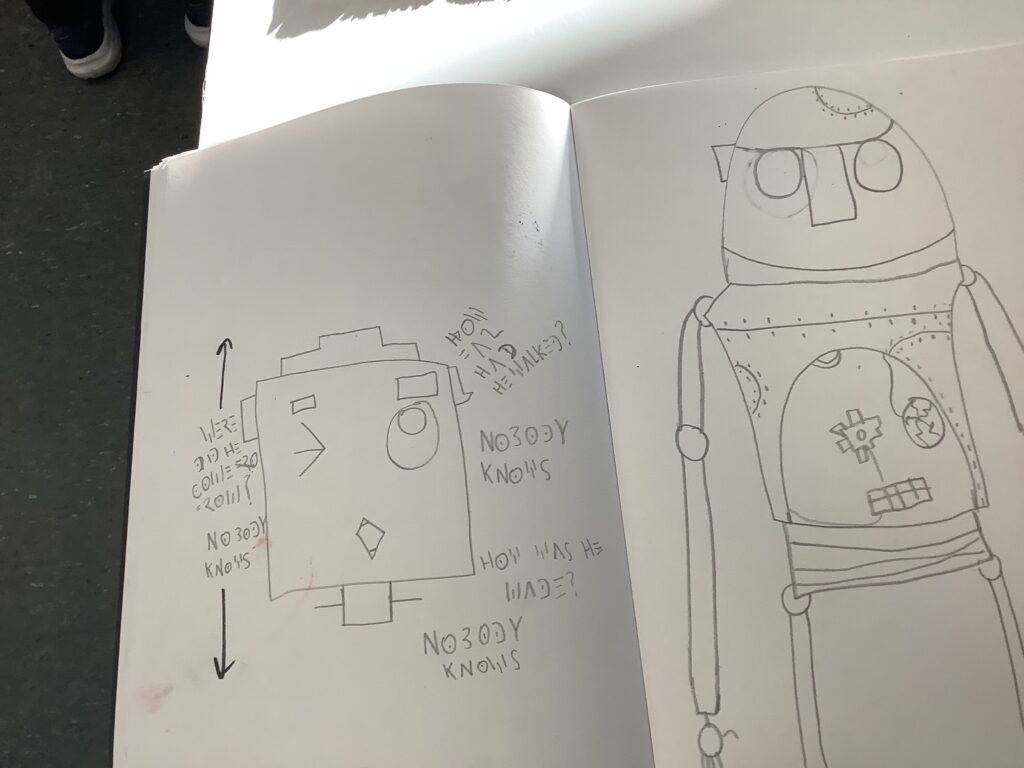
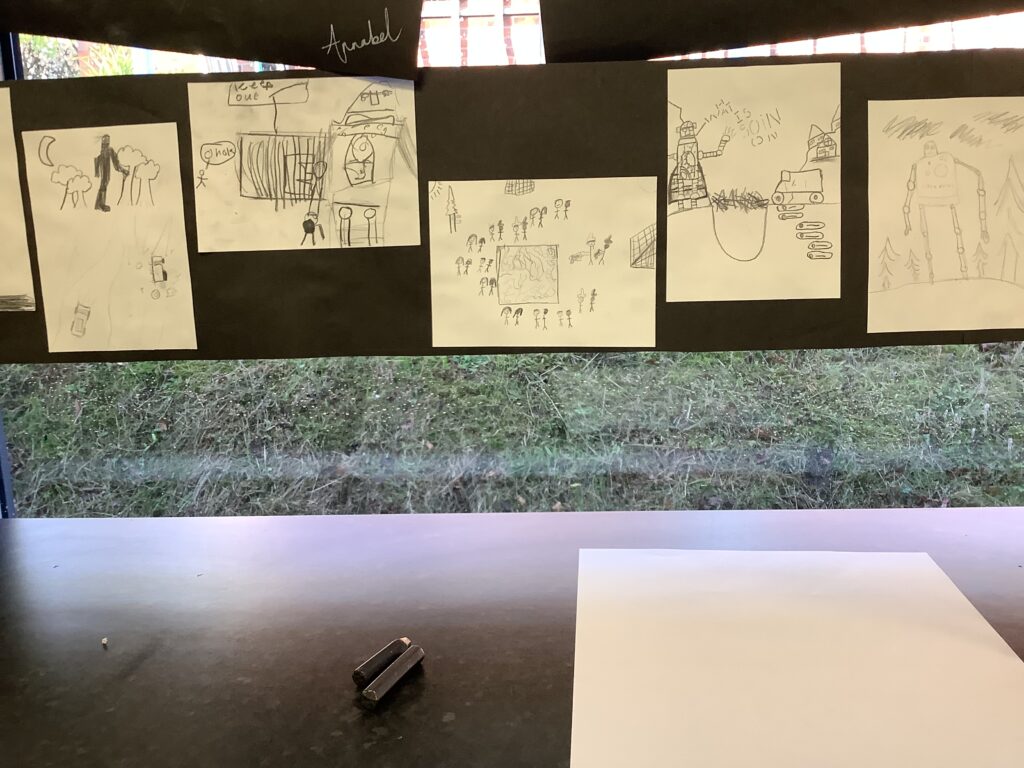
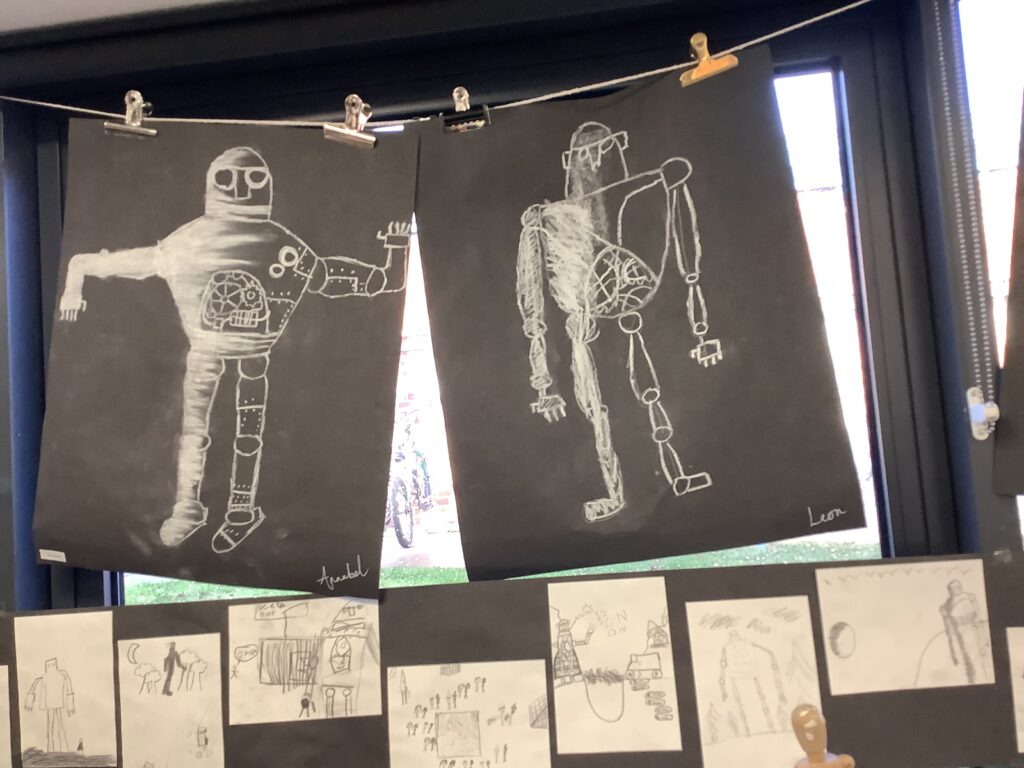
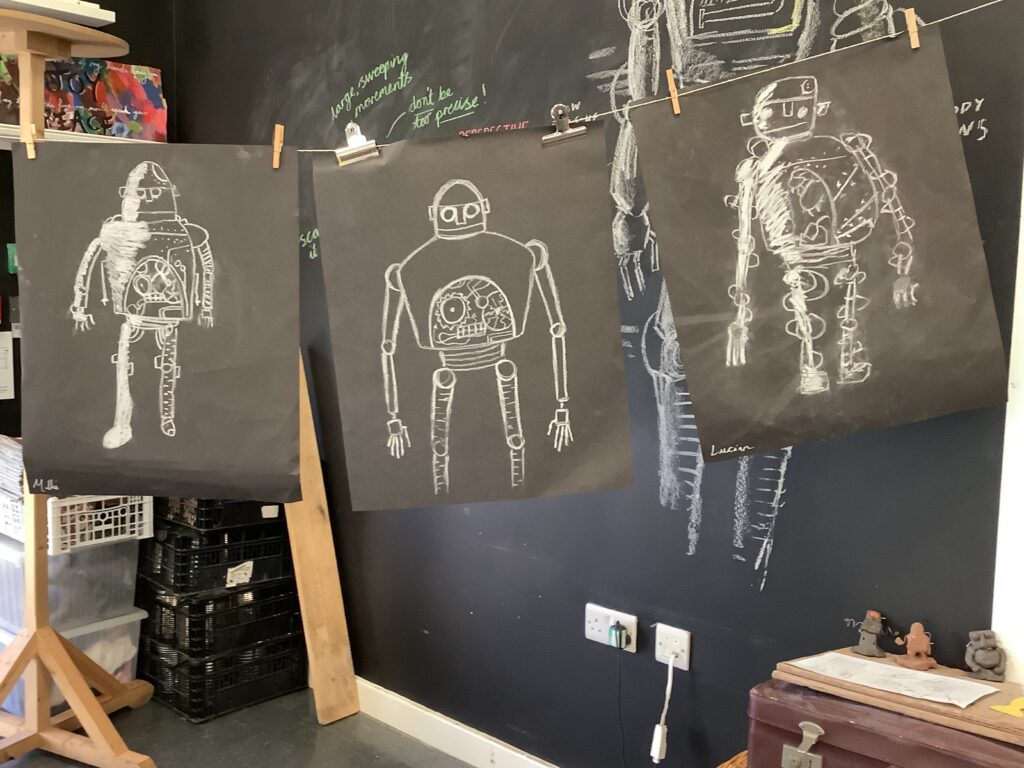
Check out Sam’s shared-writing from the Wasteland unit of Writing during this fortnight:
“I’ll be right there!” Sasha shouted as she blazed into the dense forest. She’d always wondered what it would be like to go to the Treasuring Scrapyard because she heard there was armour for her collection. Navigating through the impenetrable forest, she knew she was there. On top of the gate, she spotted a security camera. TODAY WAS THE DAY!
Sasha suddenly had an idea. She started to burrow under the electric fence but she got zapped twice though. After that, she hunted for the armour, which she heard about. Moments later, the police came barging through the gate. Quickly, she sprinted into a broken place. Then, a lightning bolt hit the gate. In a flash, some abandoned cars toppled onto the broken plane while Sasha quickly peaked outside to check on the police. She felt regret hit her.
It was then that she spotted something a bit unusual. A music box hidden in a pile of broken car parts. It looked a lot like a treasure chest but it had indecipherable patterns on the head of the box. Sasha quickly snatched it from the pile of broken car parts. She started to turn the nob of the music box but it started to play a reversed tune. When it stopped, she was gone…

















